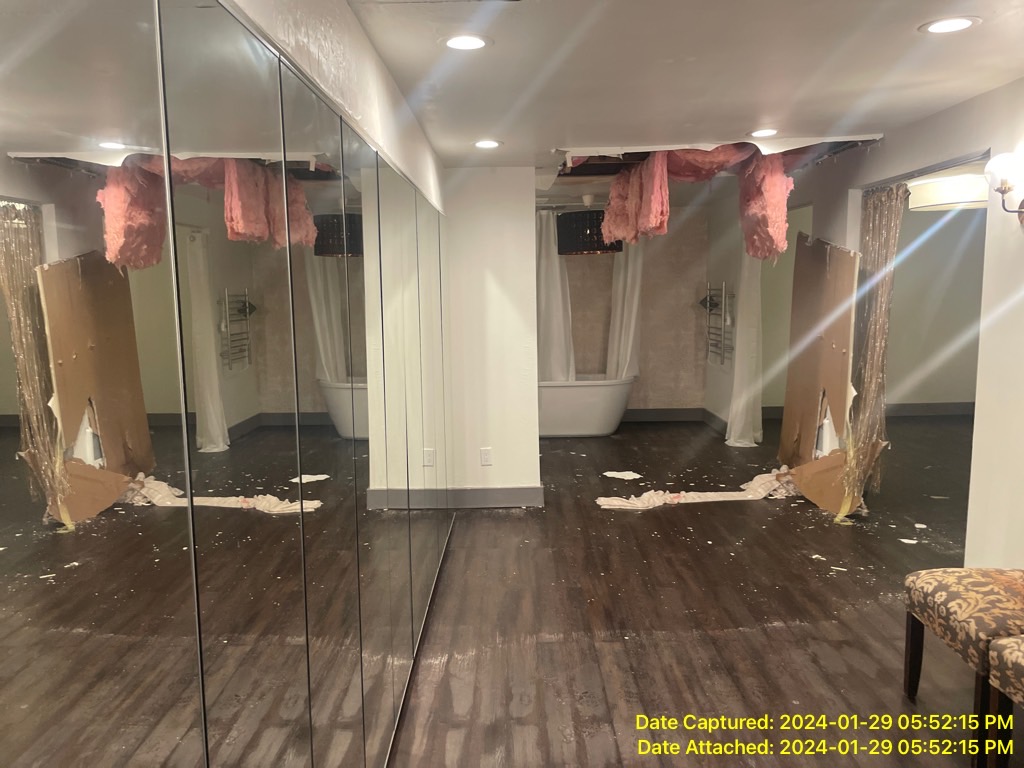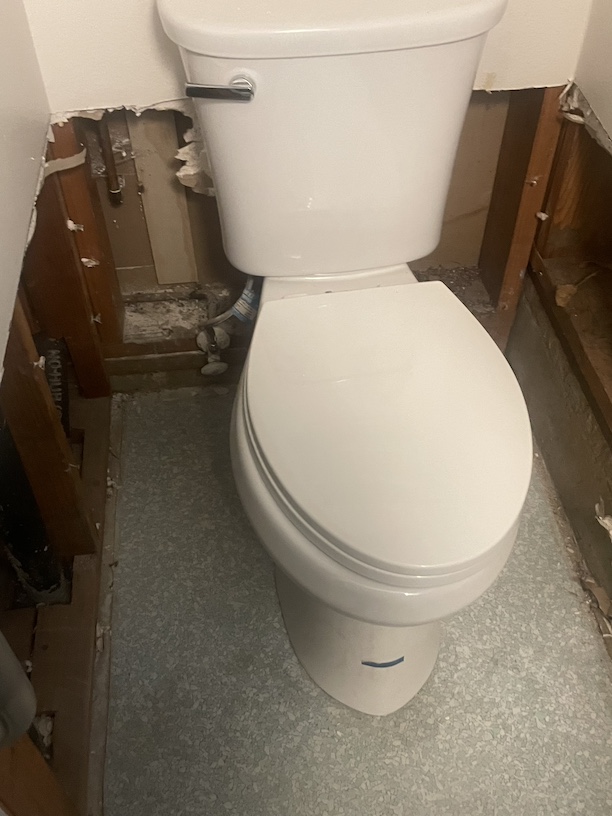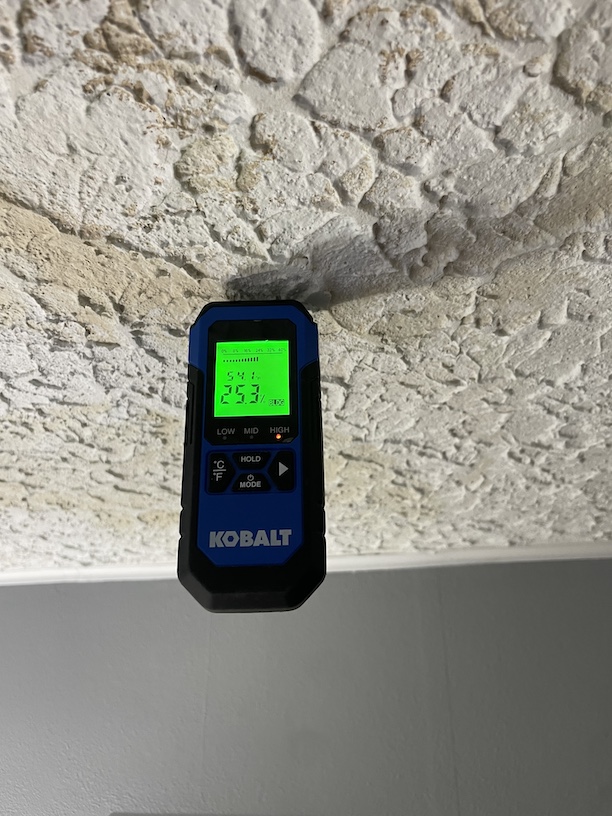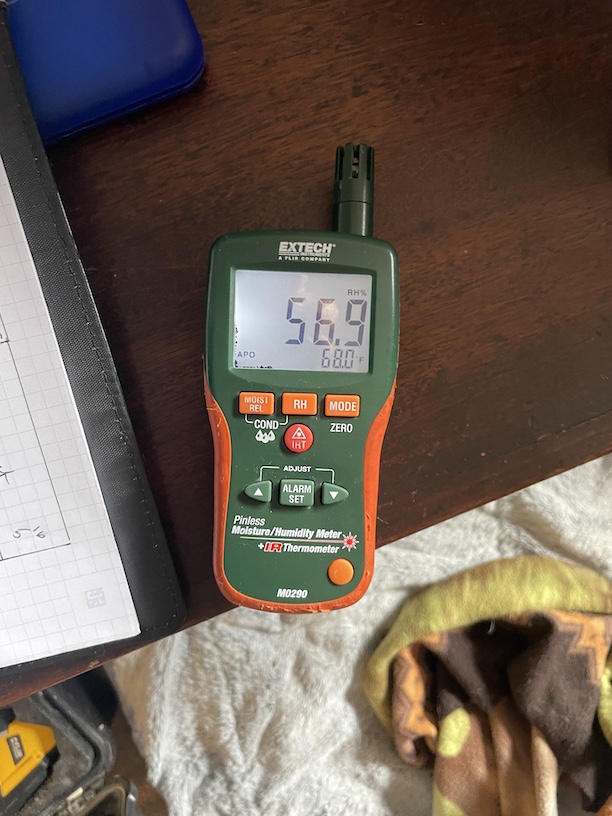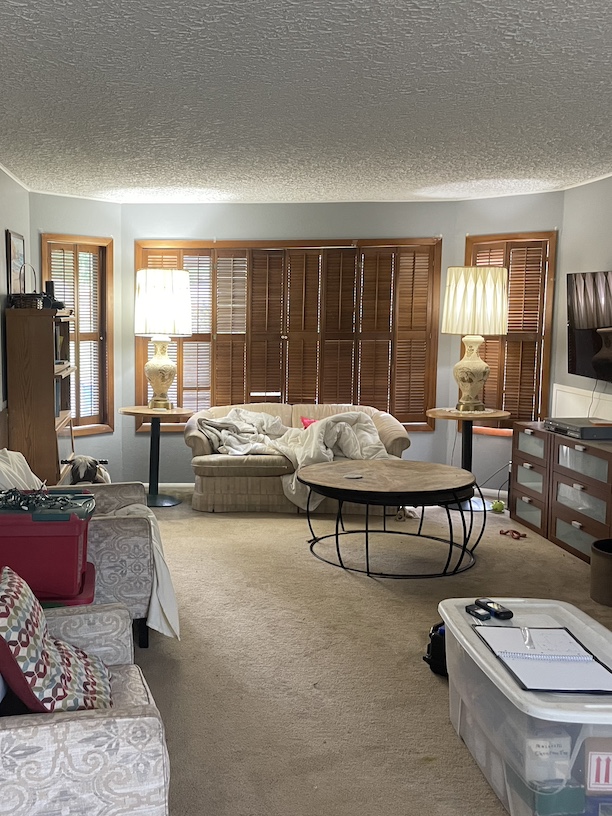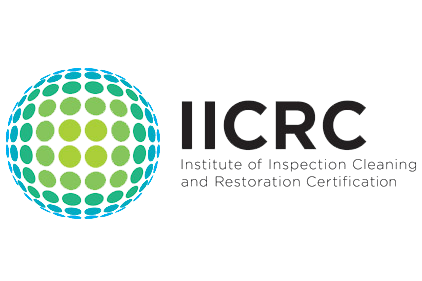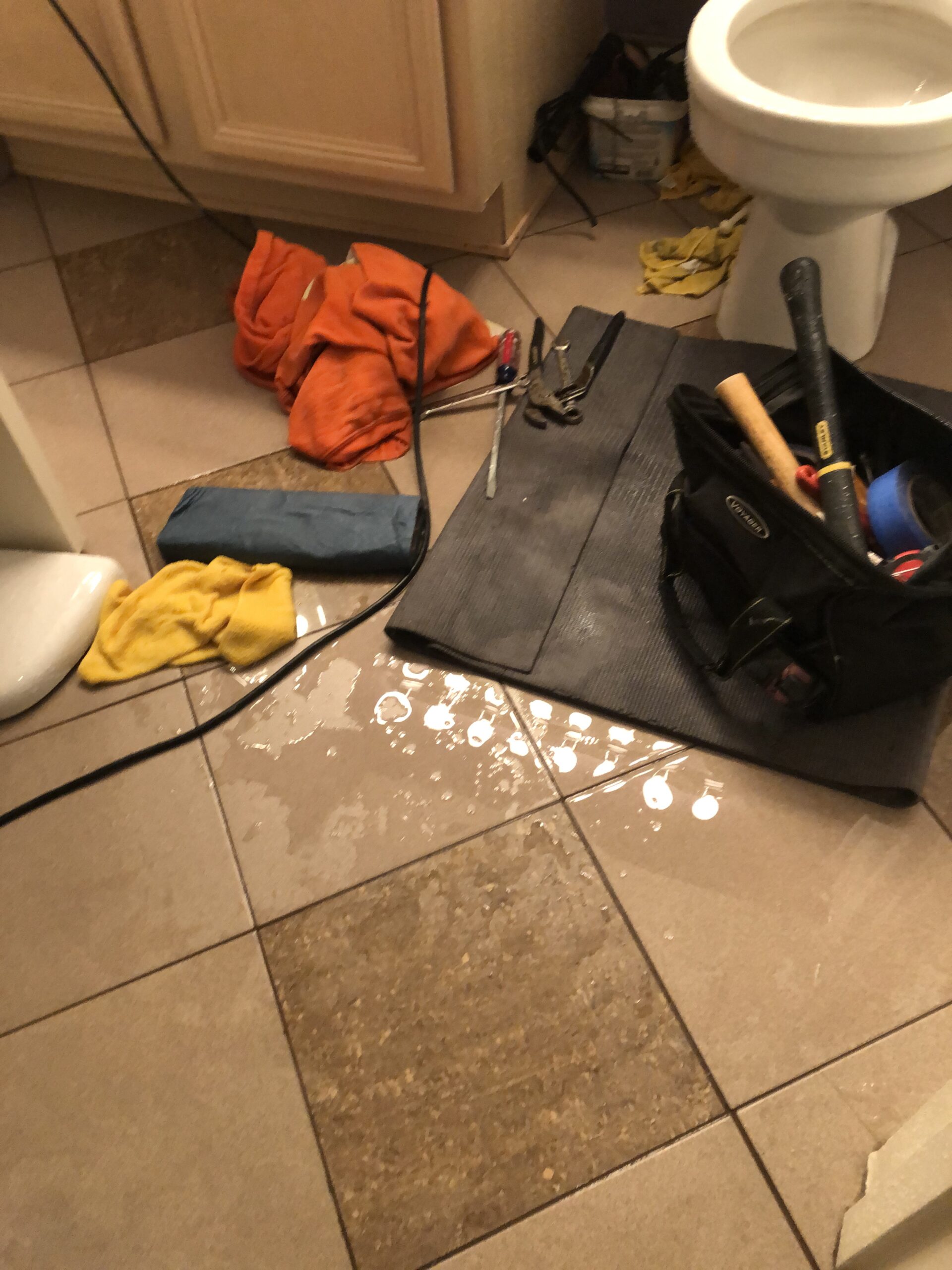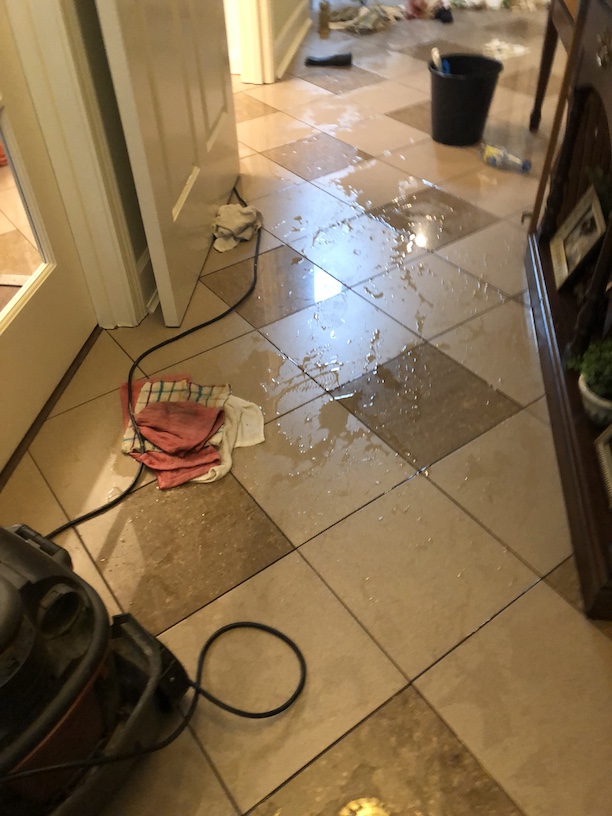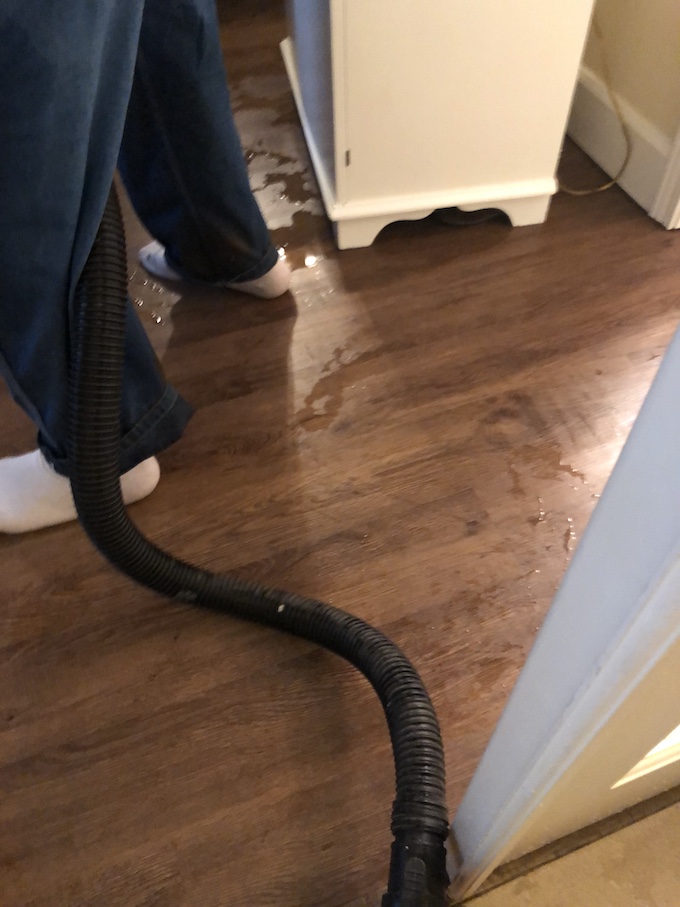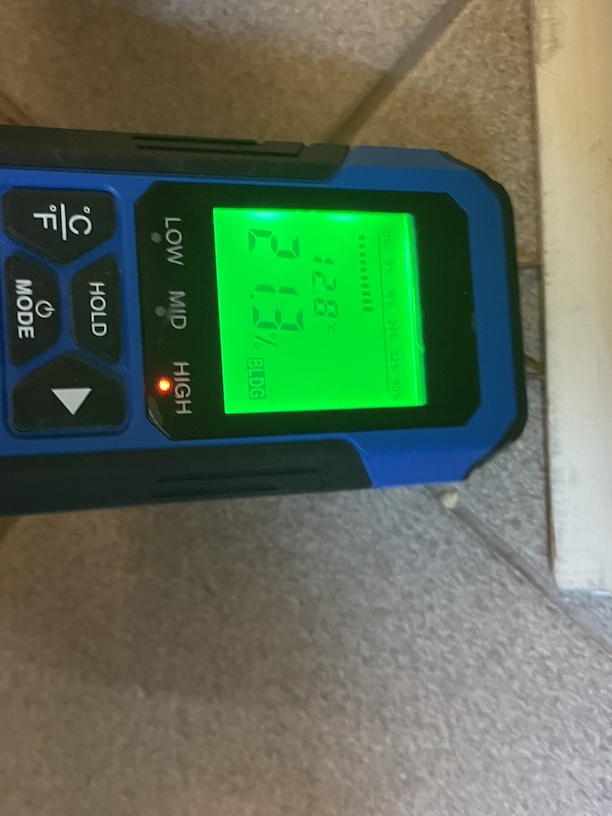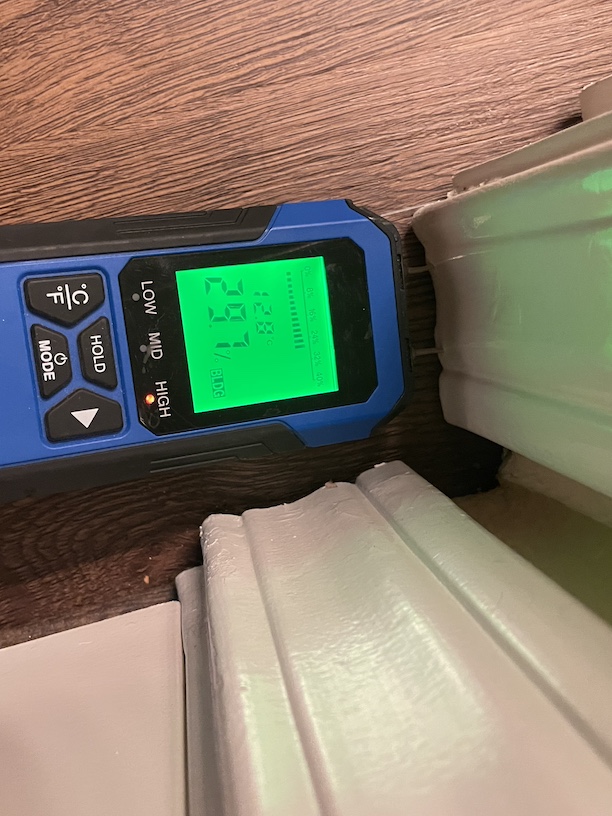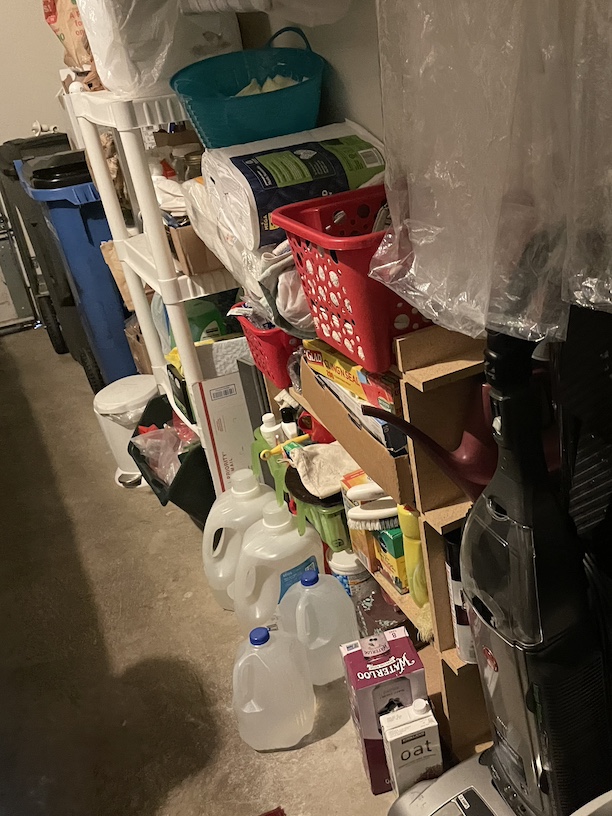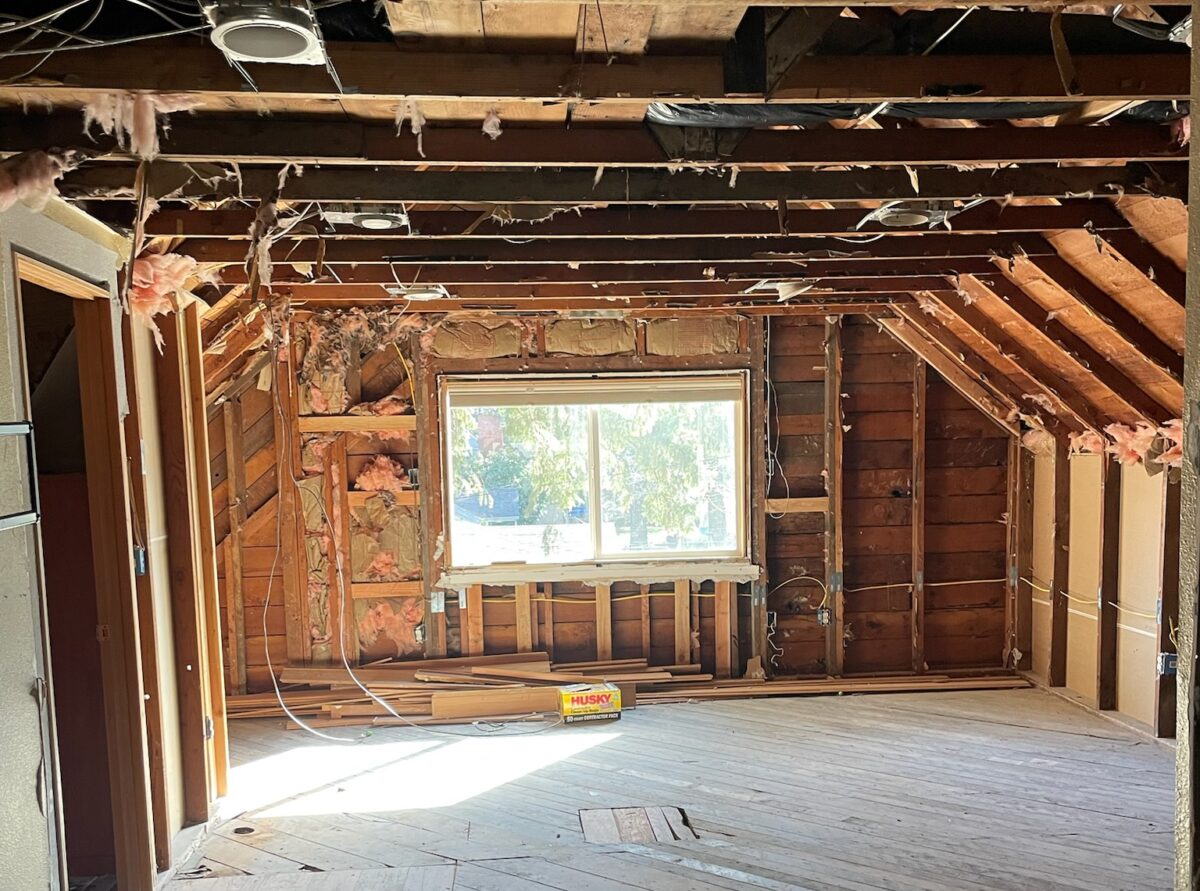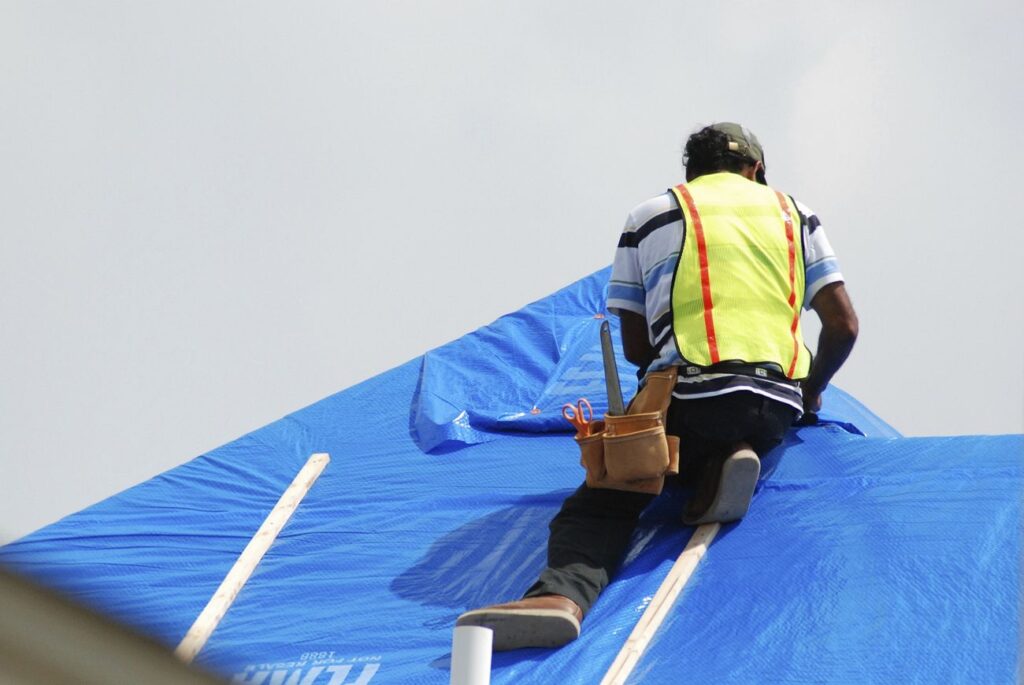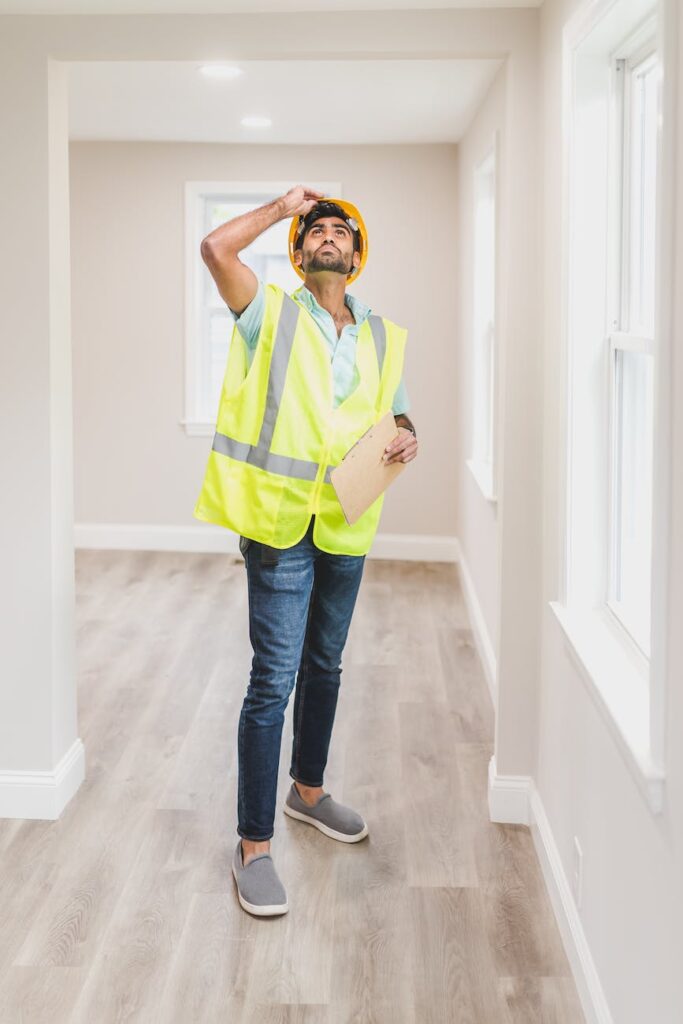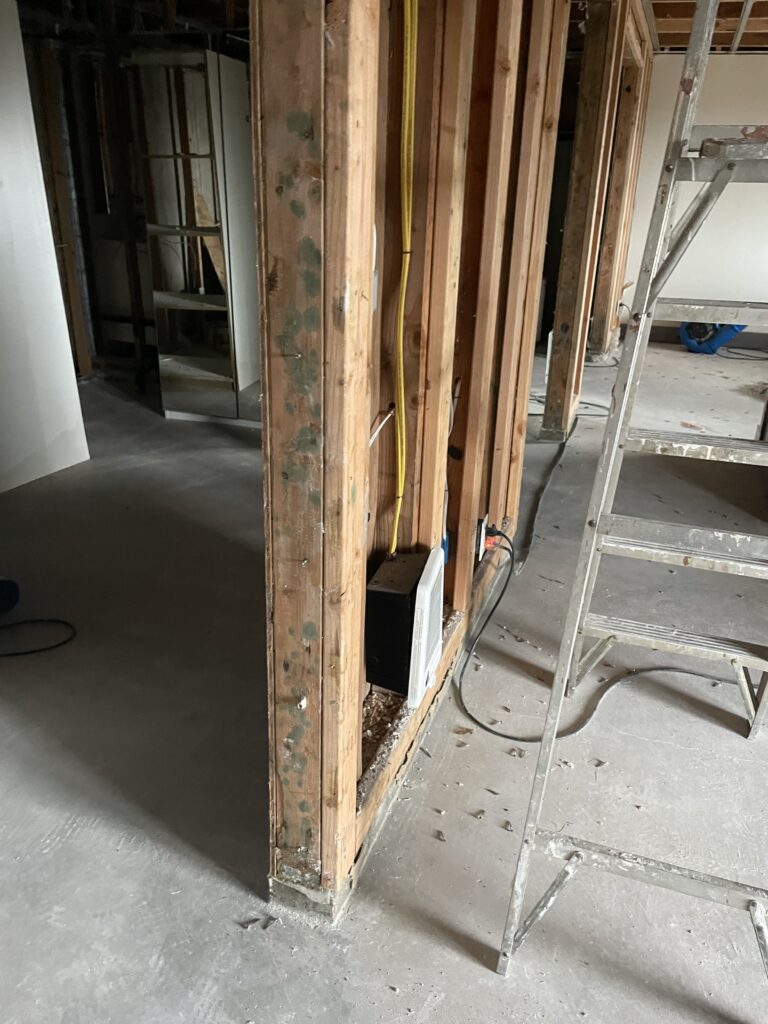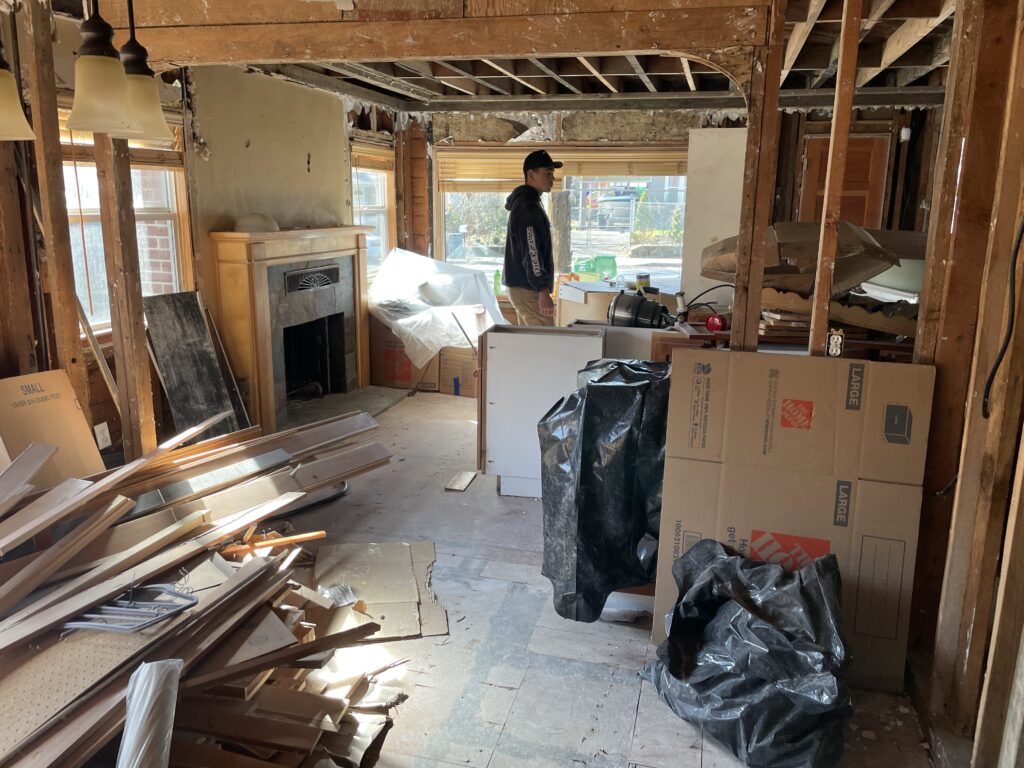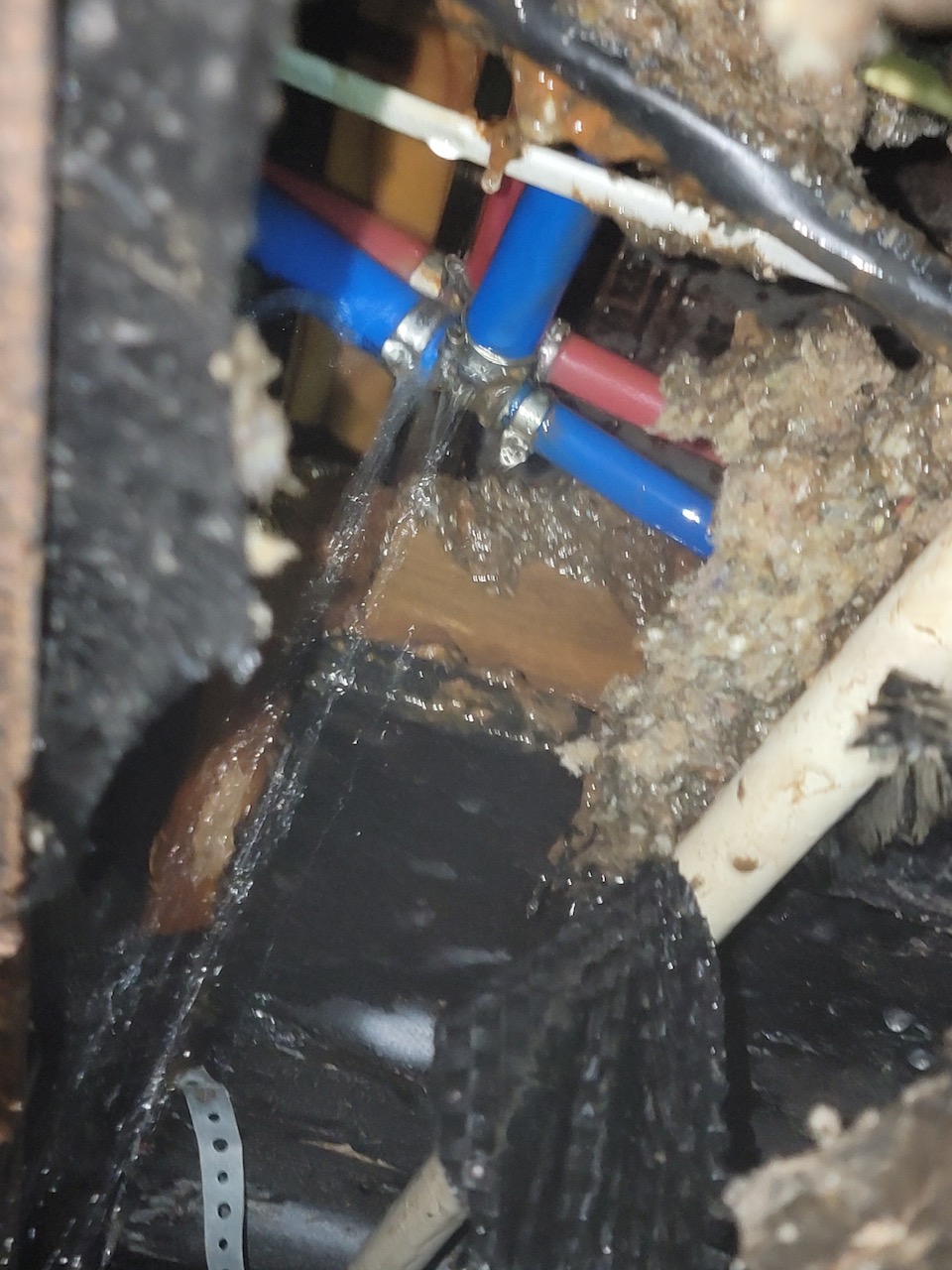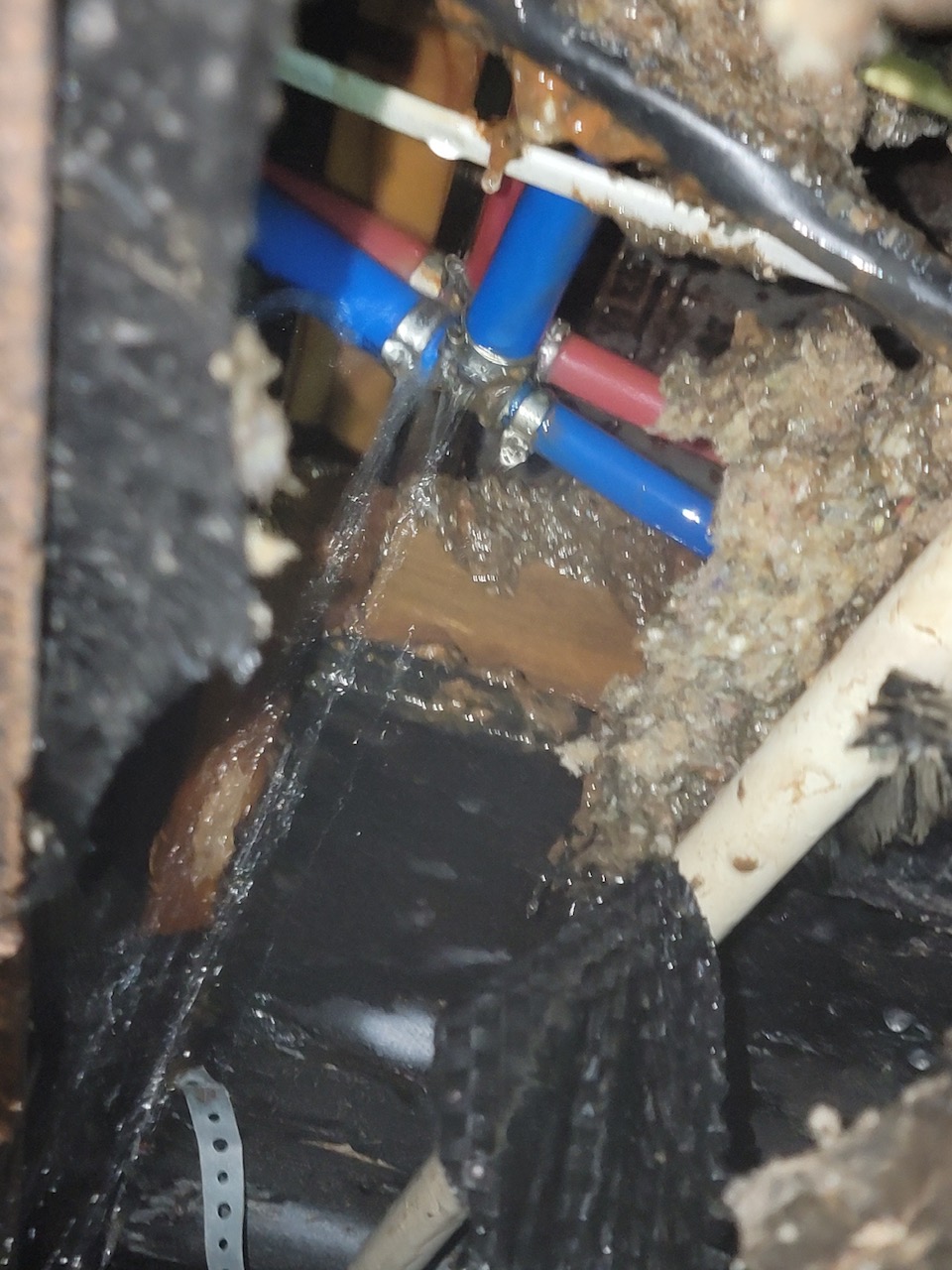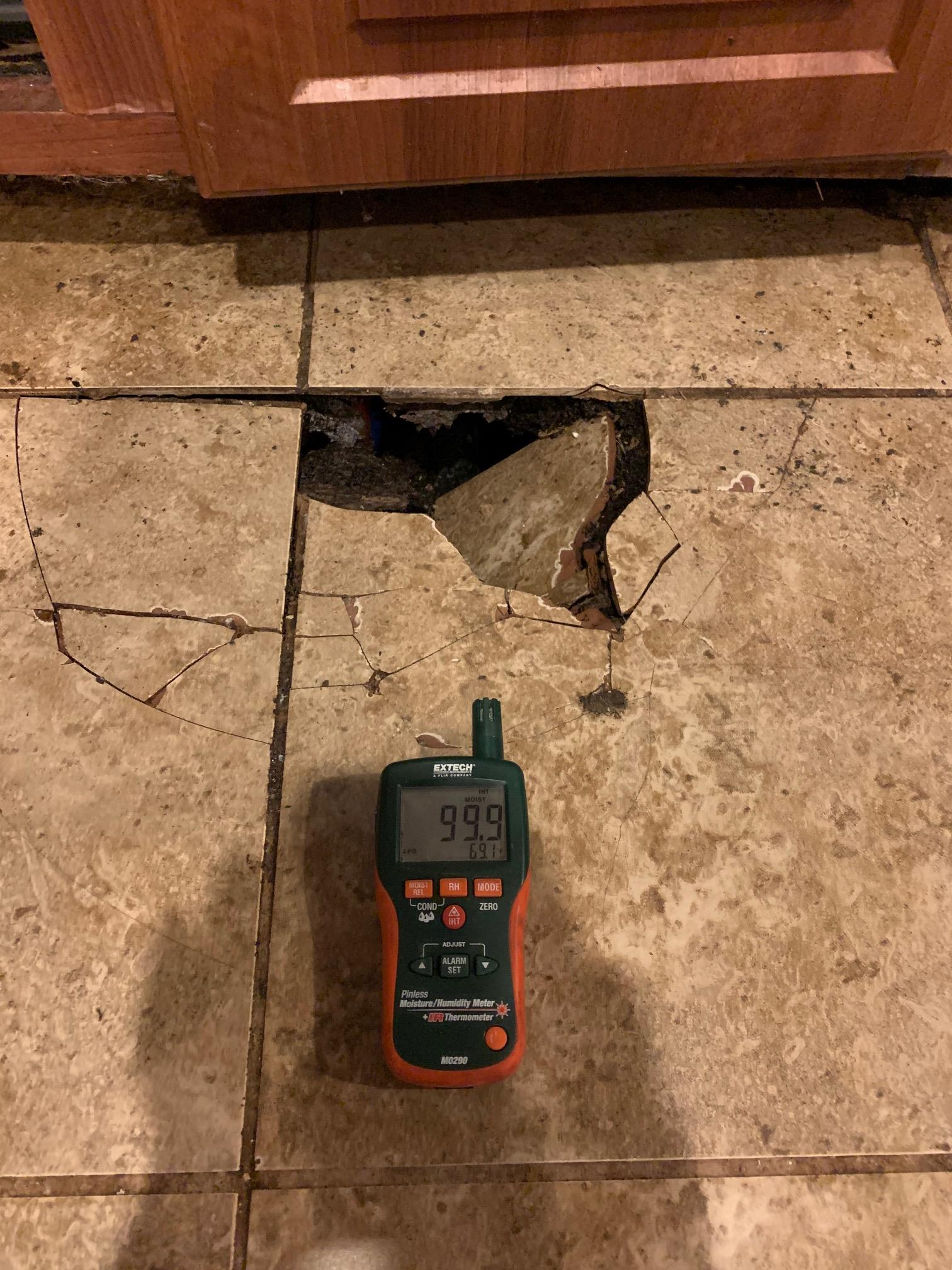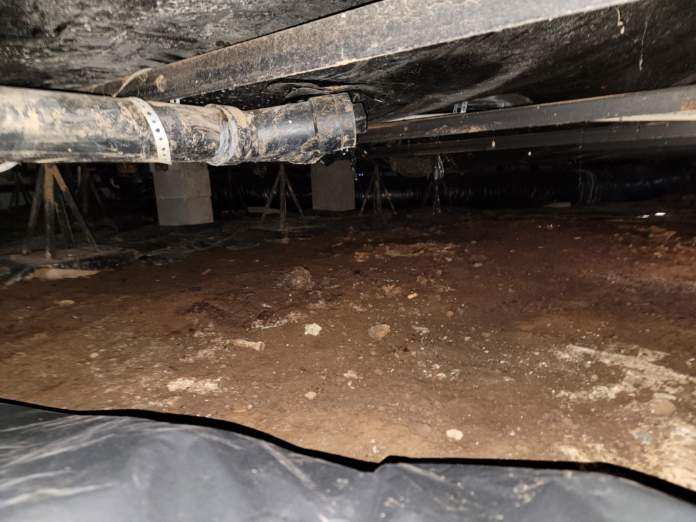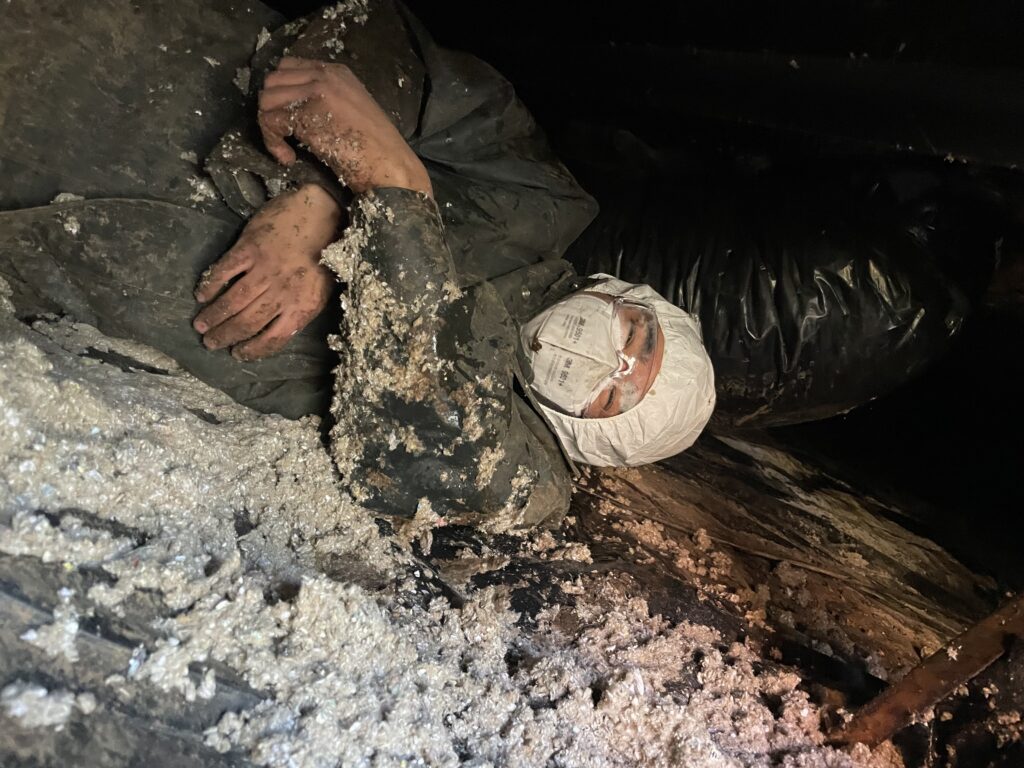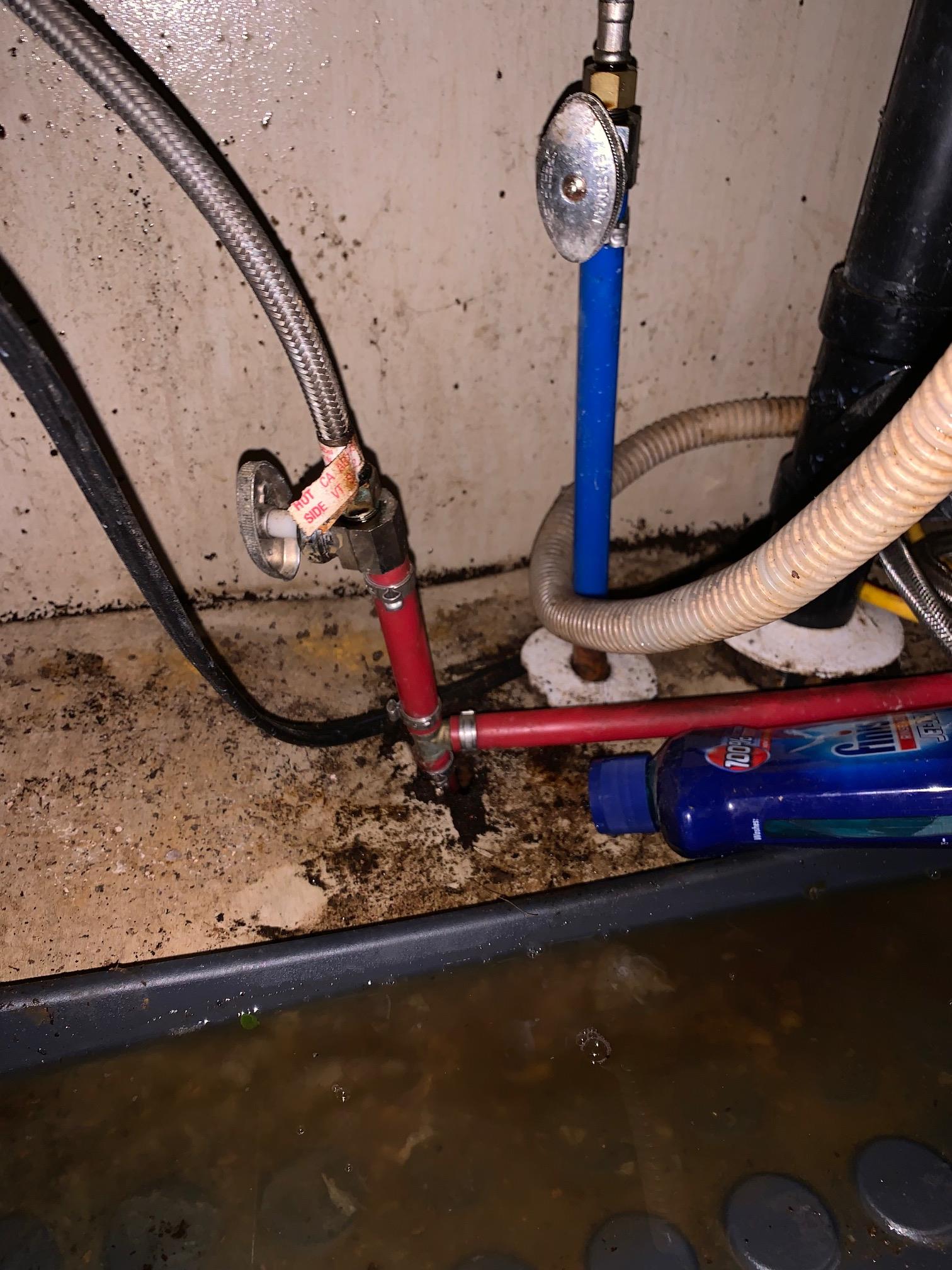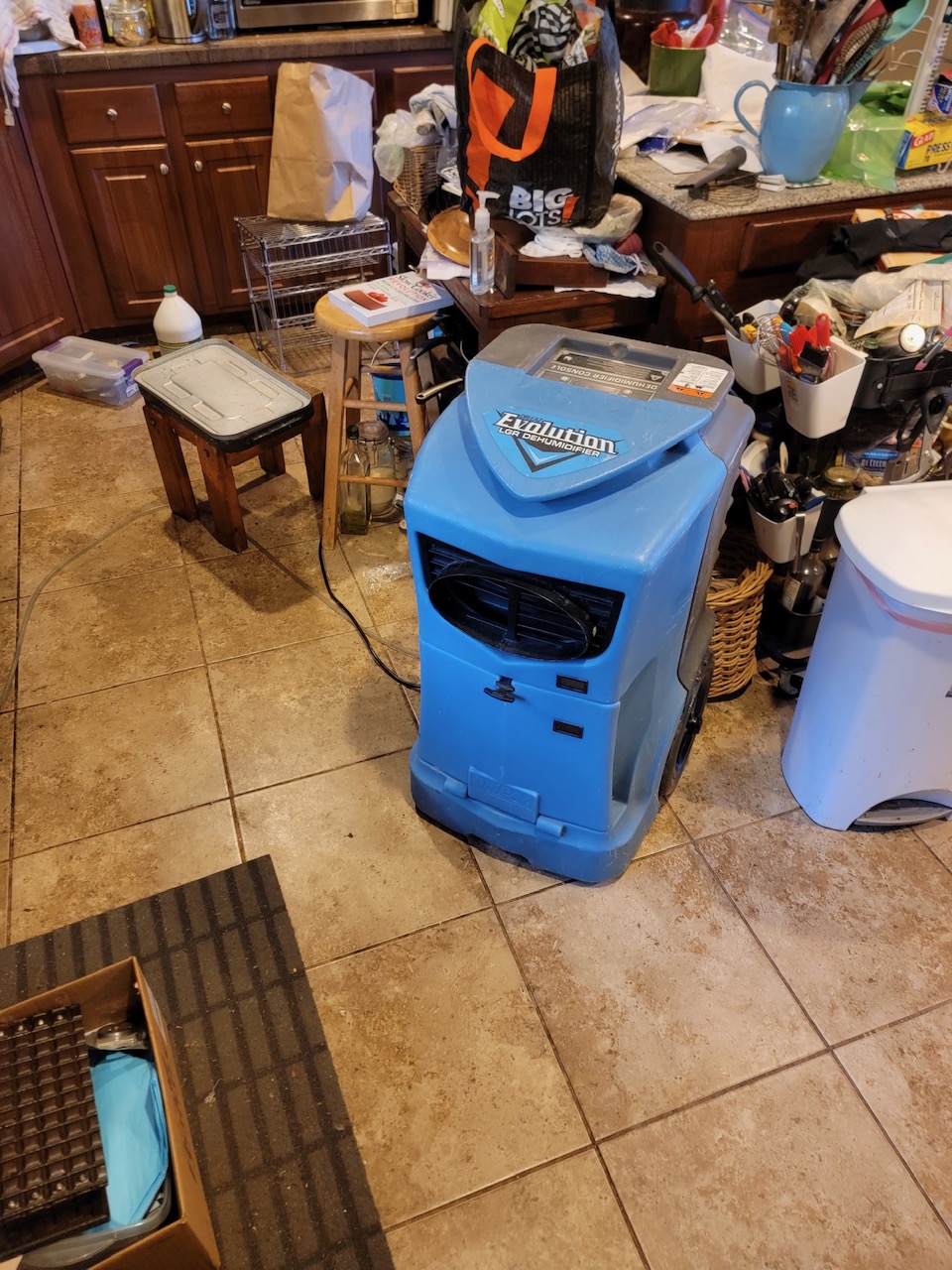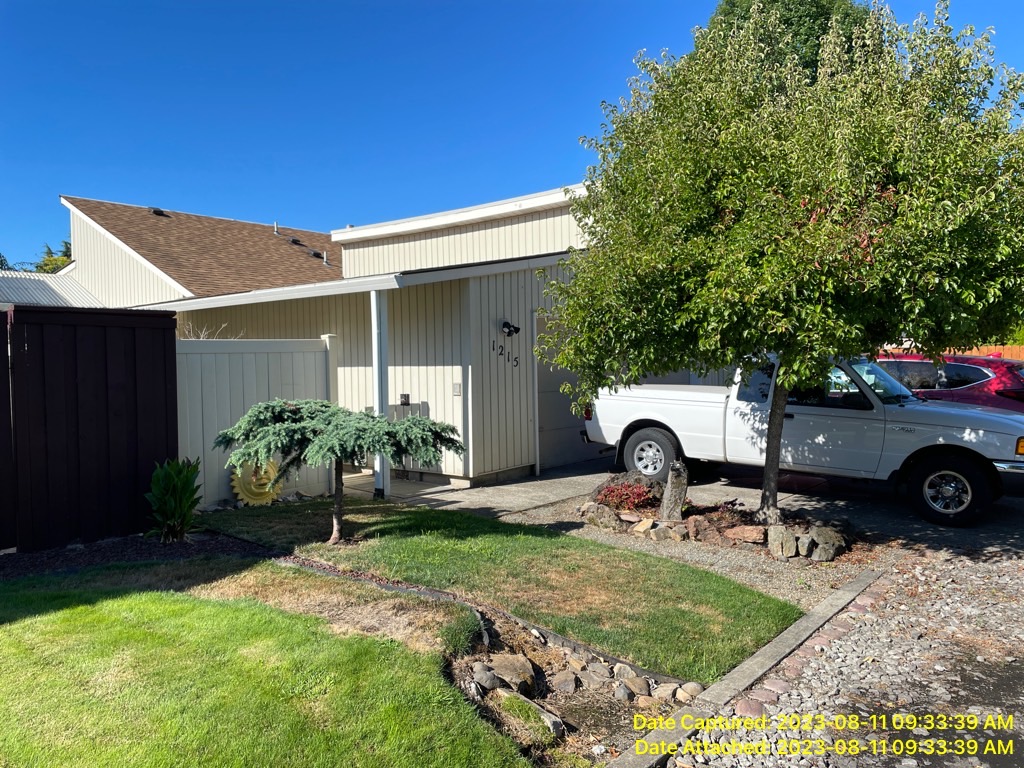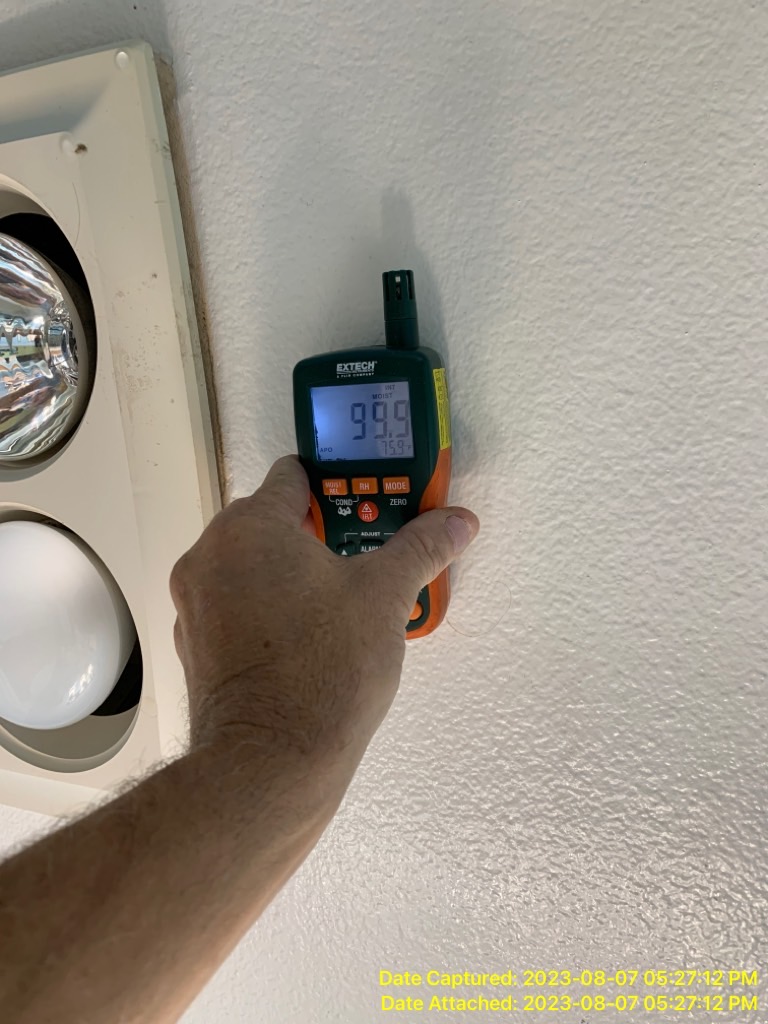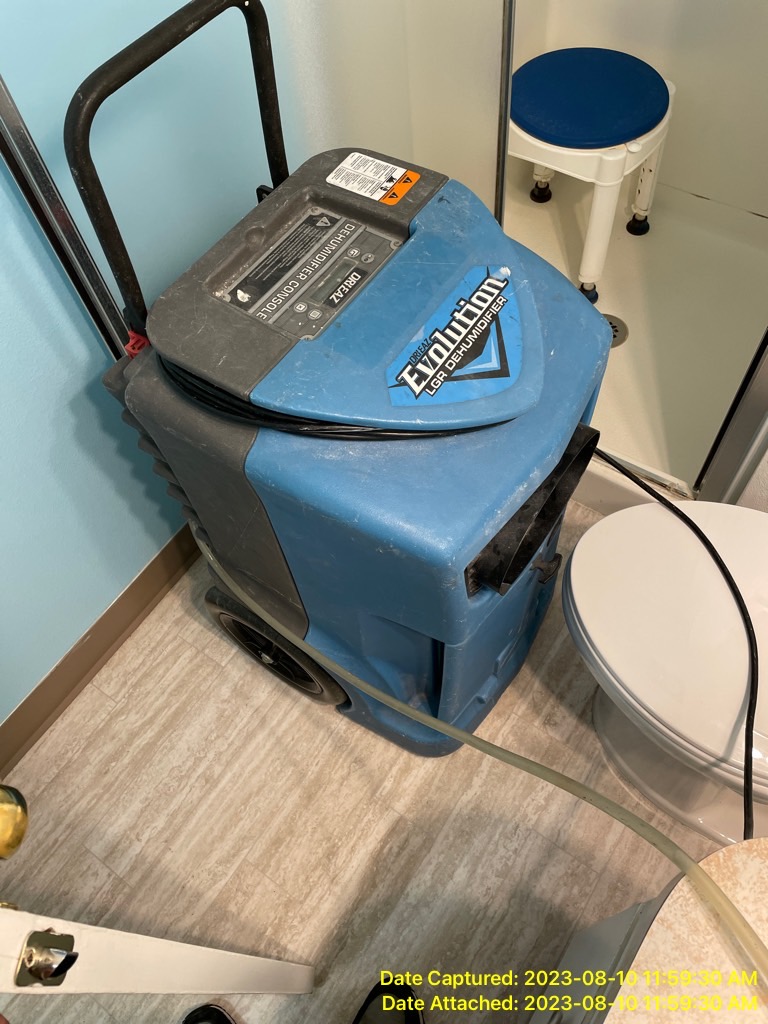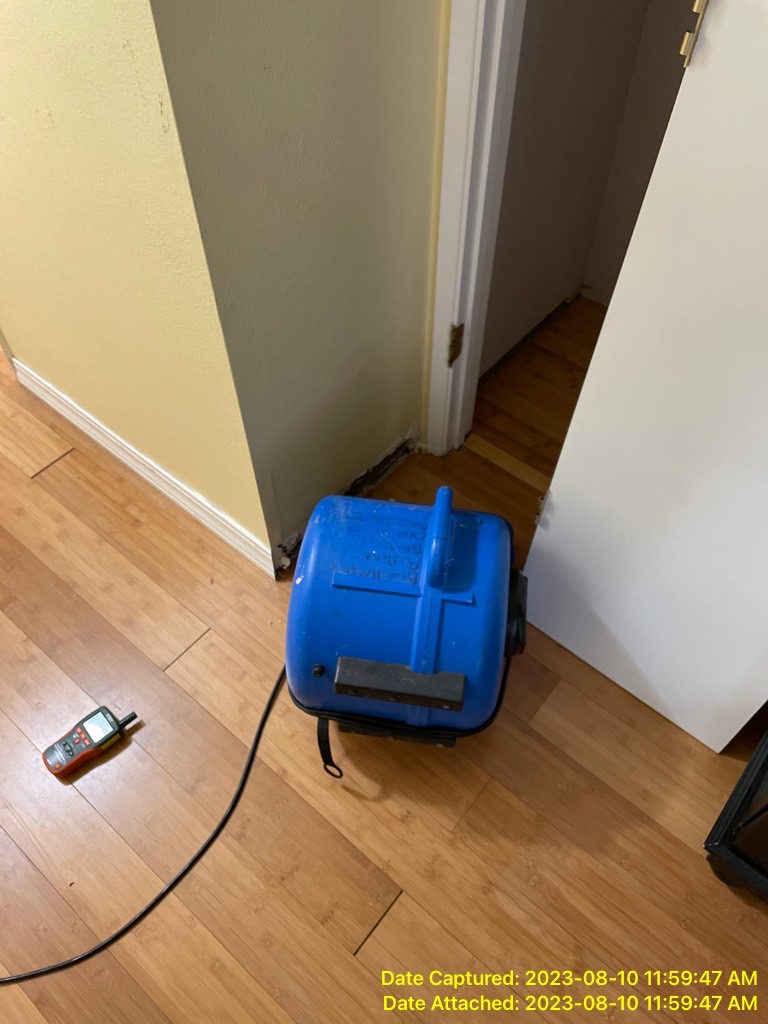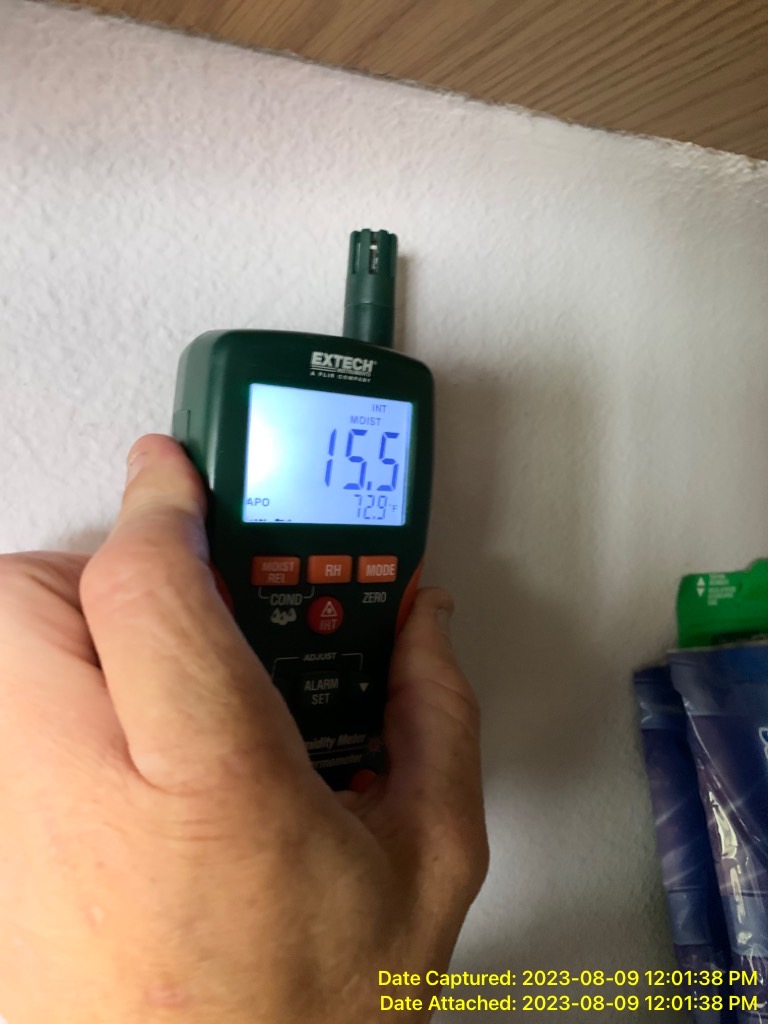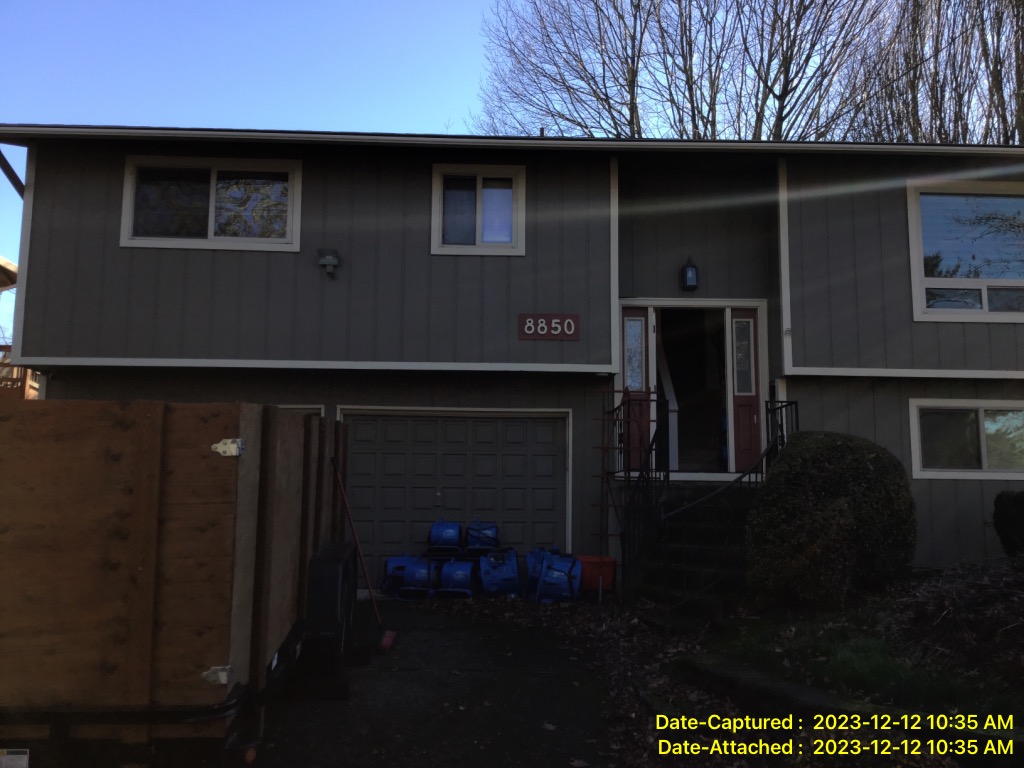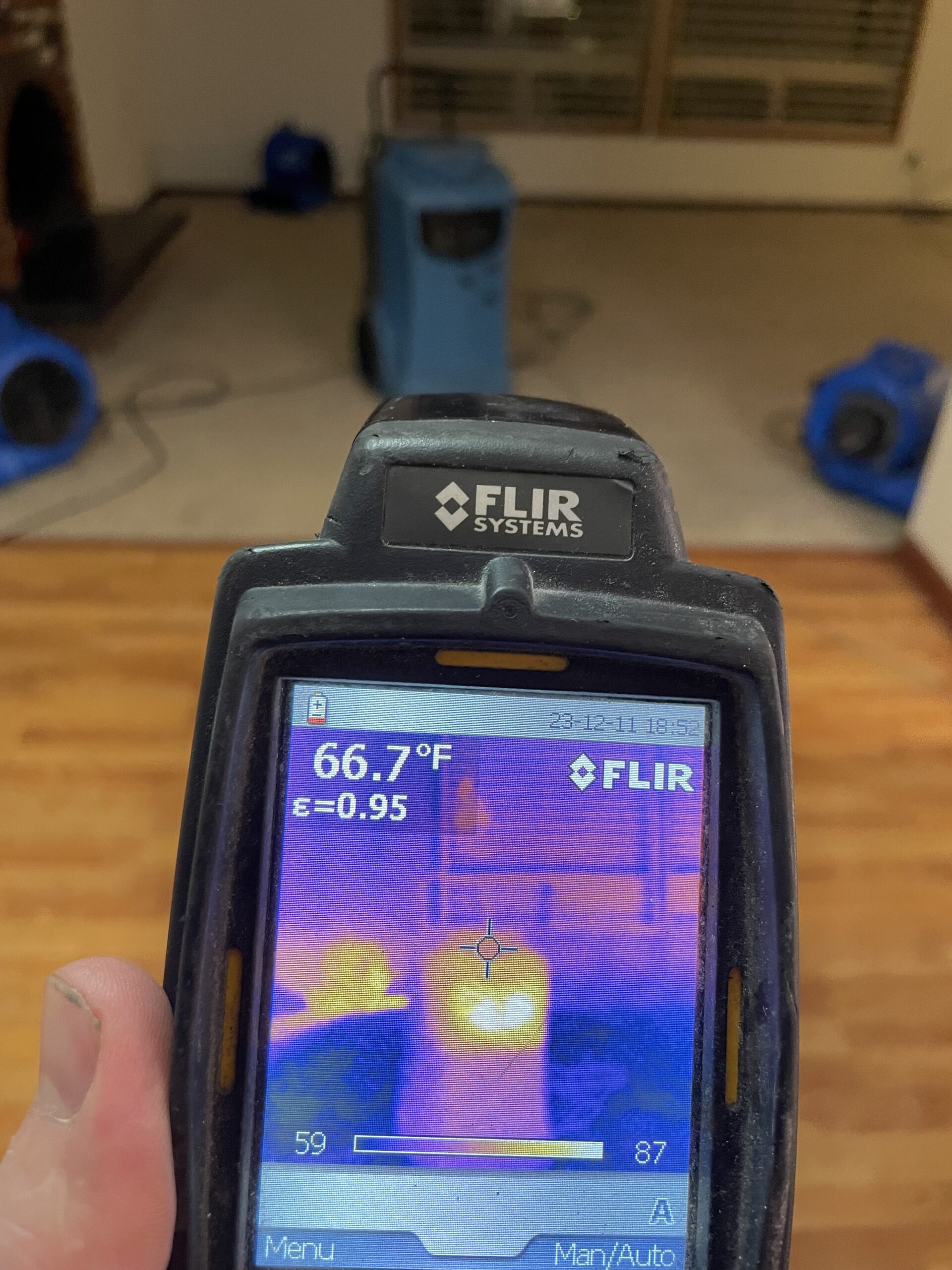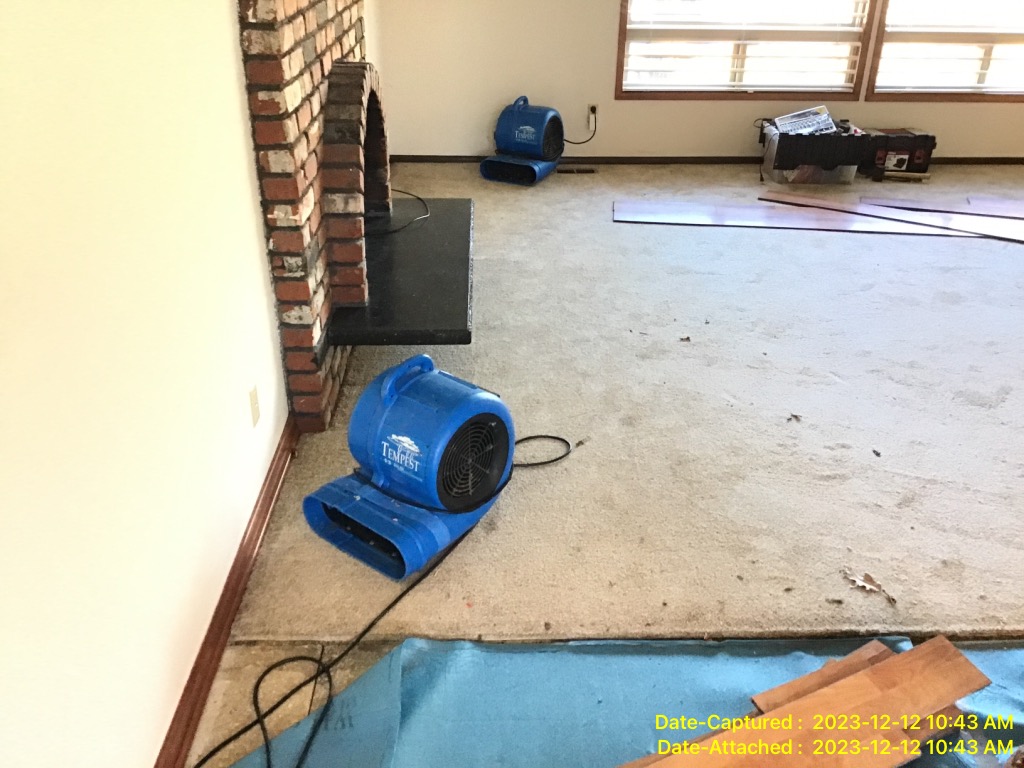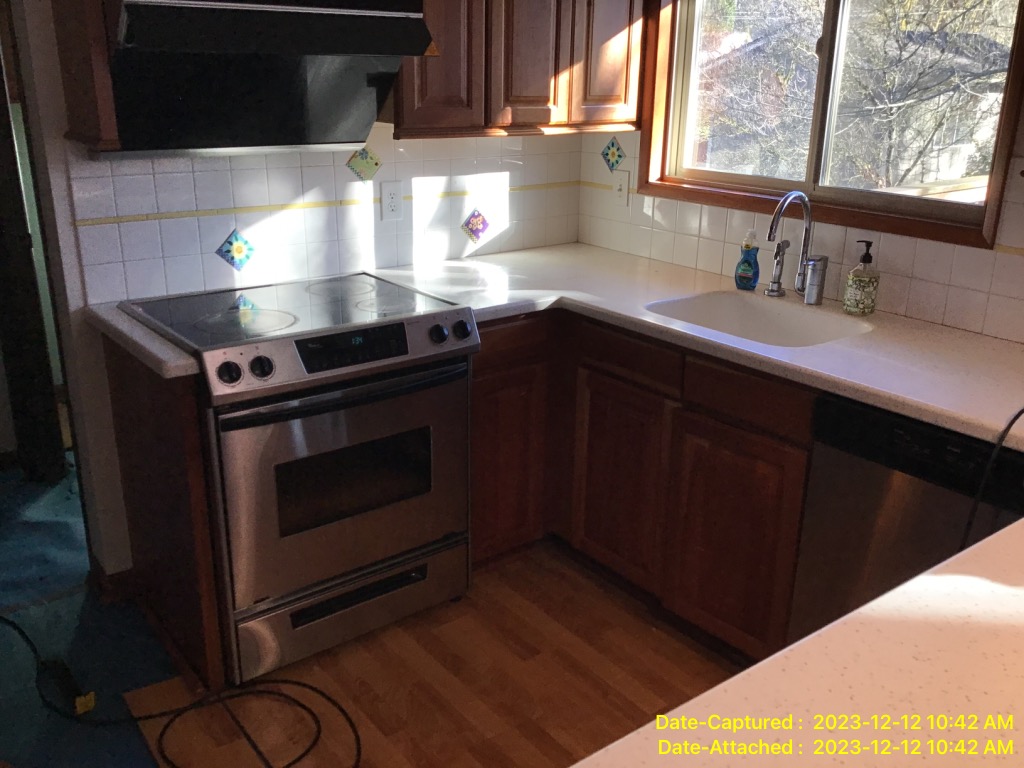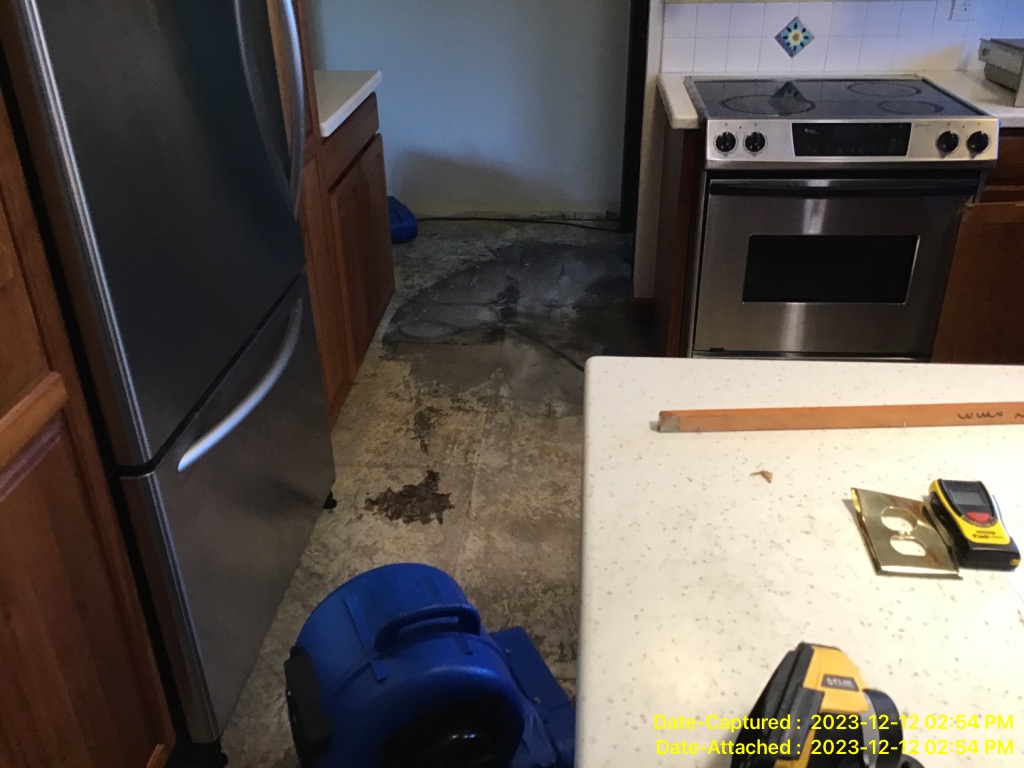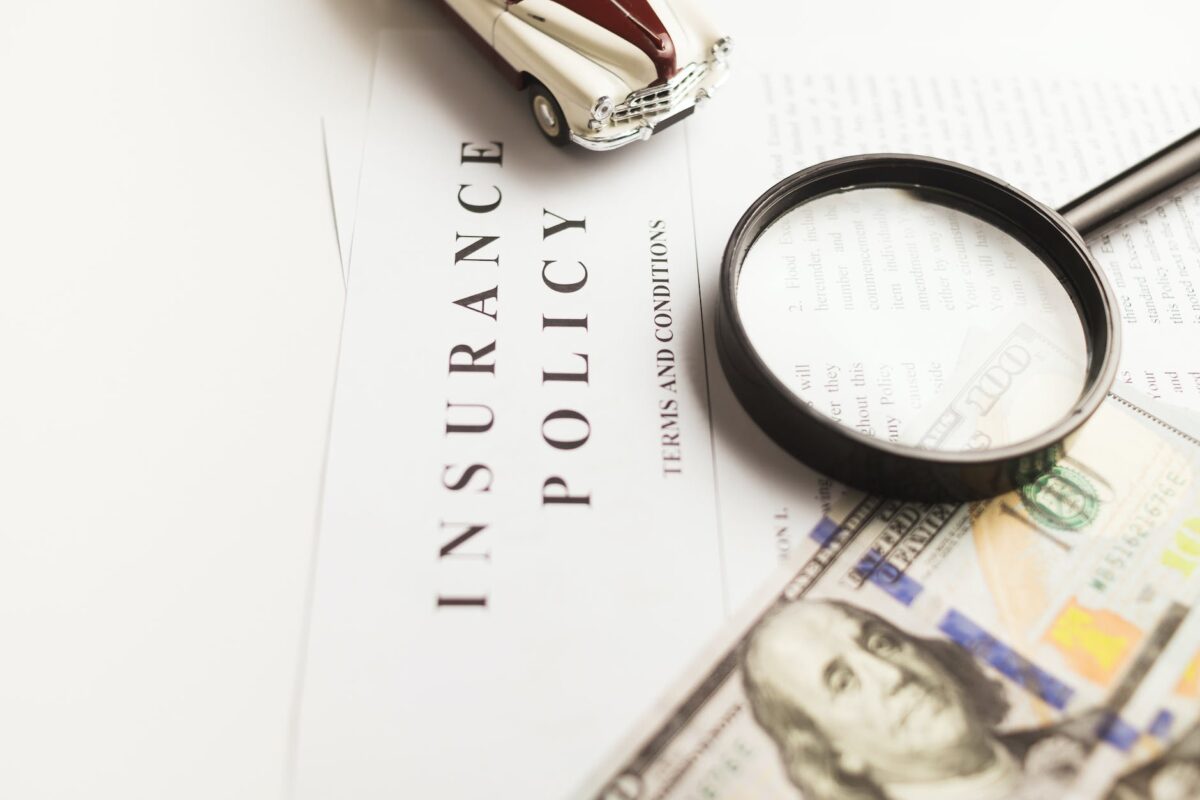How do you recover from Water Damage Restoration?
Recovering from water damage is a multifaceted process that requires prompt action, strategic planning, and expert guidance. Whether it’s a burst pipe, a flood, or a leaking roof, the aftermath of water damage can be overwhelming. However, with the right approach, homeowners can navigate this challenging situation and restore their properties to their former glory. In this article, we’ll explore the essential steps involved in recovering from water damage, from assessing the extent of the damage to working with professionals to restore and rebuild affected areas. By understanding the recovery process and taking proactive measures, homeowners can minimize further damage, expedite restoration efforts, and regain peace of mind in the wake of water-related disasters.
Unveiling the Mystery of Water Damage Restoration: A Comprehensive Guide
Water damage restoration—a term that carries weight in the realm of property ownership, yet often shrouded in uncertainty. What does it entail? How does one navigate the murky waters of restoration after a water-related catastrophe? Fear not, for we’re here to unravel the intricacies of this vital process and shed light on its significance.
Water damage restoration lies at the heart of salvaging properties from the grips of water-induced havoc. Imagine your residence or establishment submerged in floodwaters, besieged by burst pipes, or haunted by leaky roofs. It’s in these dire junctures that water damage restoration serves as the guiding light, leading you through the turbulent path of recovery.
Where Water Damage Restoration Begins
The journey begins with swift action—a meticulous assessment of the damage. Trained technicians comb through the wreckage, discerning the extent of the harm inflicted. From there, a tailored plan of action unfolds, each step strategically orchestrated to mitigate damage and restore the affected space to its former glory.
Central to this undertaking is the tandem of water extraction and drying—a delicate choreography designed to expel moisture and deter the encroachment of mold and decay. Behold the symphony: industrial-grade pumps spring into action, expeditiously ridding every corner of standing water. Simultaneously, specialized drying apparatus hum harmoniously, meticulously drawing out moisture with finesse.
But the battle against water damage doesn’t end there. Enter mold remediation—an essential facet of restoration often lurking in the shadows. Mold, with its stealthy tendrils, poses a formidable threat to both property and health. Here, meticulous cleaning and containment measures come into play, ensuring that mold’s mischievous march is halted in its tracks.
Once the chaos subsides, the spotlight shifts to structural repairs and reconstruction—an embodiment of resilience and rejuvenation. Cracked walls are meticulously patched, floors are rejuvenated, and the structural framework is fortified against potential future threats. Throughout this process, a dedication to meticulousness reigns supreme, ensuring each repair is executed with precision and unwavering attention to detail.
The most overlooked aspect
But perhaps the most overlooked aspect of water damage restoration lies in its aftermath—cleaning and sanitization. Surfaces once marred by water’s touch are scrubbed clean, restoring a sense of cleanliness and safety to the environment. It’s a final act of purification, signaling the end of one chapter and the dawn of another.
Water damage restoration transcends mere procedure—it embodies a voyage of resilience, rejuvenation, and revival. It’s the journey of reclaiming what’s been lost and emerging fortified on the opposite shore. So, when adversity strikes and water threatens your domain, recall this: with the support of a capable team, even the most formidable floods can’t extinguish the beacon of hope.
Importance of recovering properly after water damage
In the world of homeownership, few calamities strike as swiftly and mercilessly as water damage. Whether it’s from burst pipes, flooding, or leaks, the aftermath can be devastating. However, what often goes unsaid is the critical importance of recovering properly after water damage wreaks havoc on a property. In this comprehensive guide, we’ll delve into the significance of post-water damage recovery and provide essential insights to help homeowners navigate this challenging journey.
Understanding the Aftermath
When water seeps into a residence, its impacts can surpass what meets the eye. Mold proliferation, structural degradation, and health risks are among the potential outcomes. Furthermore, in the absence of adequate recovery endeavors, persistent moisture can perpetuate problems, amplifying the harm and hindering restoration endeavors.
The Importance of Swift Action
One of the most crucial aspects of post-water damage recovery is taking swift action. As soon as water damage is discovered, it’s imperative to act promptly. This means contacting a professional restoration company to assess the situation and initiate mitigation efforts immediately. The longer water sits, the greater the likelihood of secondary damage, such as mold growth and structural deterioration.
Mitigating Further Damage
Effective recovery following water damage commences with the prevention of further harm. This necessitates a sequence of proactive measures, encompassing water extraction, drying, and dehumidification. Skilled restoration professionals employ specialized tools and methods to swiftly and effectively eliminate excess water and moisture from the impacted zone. By promptly tackling these issues, homeowners can forestall additional damage and accelerate the restoration
Restoring Safety and Functionality
Beyond mitigating damage, proper recovery efforts focus on restoring safety and functionality to the home. This may involve structural repairs, mold remediation, and sanitization procedures to ensure that the property is safe and habitable once again. Professional restoration companies employ industry best practices and adhere to safety standards to achieve optimal results.
Preserving Peace of Mind
Arguably, the foremost advantage of thorough recovery post-water damage lies in the preservation of peace of mind. The assurance that one’s dwelling has undergone meticulous restoration and has been fortified against potential future challenges offers immeasurable comfort. Through committing to extensive recovery endeavors, homeowners can confidently trust that their property is entrusted to competent hands.
The Importance of Recovering Property After Water Damage
The importance of recovering properly after water damage cannot be overstated. Swift action, thorough mitigation efforts, and professional restoration services are essential components of the recovery process. By prioritizing proper recovery, homeowners can minimize damage, restore their property to its pre-loss condition, and reclaim peace of mind in the aftermath of a water-related disaster.
Technicians Responding Now!
Contact us today and get help you need and deserve.
We’re responding to all restoration emergencies now. Including Water Damage, Fire Damage, Smoke Damage, and more. Call Now.
7 Immediate Steps After Water Damage
Water damage—few things can disrupt the tranquility of homeownership with such swiftness and severity. Whether it’s a burst pipe, a leaking roof, or a natural disaster, the aftermath of water damage can be overwhelming. In this guide, we’ll explore the essential immediate steps to take in the wake of water damage, helping homeowners navigate this challenging time with confidence and clarity.
1. Assess the Situation
When faced with water damage, the initial and paramount action is to evaluate the situation with composure and objectivity. Gauge the extent of the damage and prioritize safety as the foremost concern. If deemed safe, shut off the water supply to stem further flooding and minimize additional damage.
2. Contact a Professional Restoration Company
Once the immediate safety concerns have been addressed, it’s time to reach out to a reputable water damage restoration company. These professionals have the expertise, equipment, and experience to handle water damage effectively. Prompt action is essential to minimize damage and expedite the restoration process.
3. Mitigate Further Damage
Promptly inform your insurance provider about the water damage to kickstart the claims process swiftly. Furnish them with comprehensive details regarding the extent of the damage and any documentation you’ve compiled. Adhere closely to their directives and maintain meticulous records of all correspondence for future reference.
4. Document the Damage
As you await the arrival of the restoration team, document the damage thoroughly. Take photos and videos of the affected areas from multiple angles, noting any visible damage to structures, furniture, appliances, and personal belongings. This documentation will be invaluable for insurance claims and the restoration process.
5. Communicate with Your Insurance Company
Reach out to your insurance company without delay to notify them of the water damage and commence the claims procedure. Furnish them with thorough information regarding the scope of the damage and any documentation you’ve assembled. Ensure to adhere closely to their guidance and retain records of all correspondence for future reference.
6. Follow Safety Precautions
Throughout the cleanup and restoration process, prioritize safety at all times. Avoid contact with contaminated water, wear protective gear such as gloves and masks when handling damaged materials, and be cautious of electrical hazards. If you’re unsure about the safety of any situation, consult with the restoration professionals or emergency services.
7. Stay Informed and Be Patient
Lastly, maintain awareness and exercise patience during the recovery journey. Your restoration experts will diligently evaluate the damage, formulate a thorough restoration strategy, and return your home to its pre-damaged state. Maintain open communication with the professionals, inquire if uncertainties arise, and rely on their expertise to navigate through this demanding period.
The immediate steps after water damage are crucial for minimizing further damage and expediting the restoration process. By assessing the situation calmly, contacting professionals promptly, documenting the damage thoroughly, and prioritizing safety at all times, homeowners can navigate the aftermath of water damage with resilience and confidence.
Assessing the extent of damage
Water damage—often regarded as a formidable adversary—can disrupt the tranquility of homeownership with swift and unforgiving ferocity. Yet, within the chaos lies an opportunity for clarity and resilience. Much like a masterful conductor leading an orchestra, the process of assessing water damage orchestrates a symphony of observation, analysis, and innovation.
Understanding the Significance
Before embarking on the journey of restoration, one must first grasp the significance of assessing water damage. This initial step serves as the bedrock upon which all subsequent actions are built. It provides clarity amidst the chaos, offering insights into the scope and severity of the damage incurred.
A Methodical Approach
At the heart of assessing water damage lies a symphony of observation—an art form in itself. It beckons homeowners to embrace curiosity, keenly observing the subtle nuances and intricacies of the affected areas. Like an artist meticulously crafting a masterpiece, each observation serves as a brushstroke, painting a vivid picture of the damage incurred.
Harnessing the Power of Technology
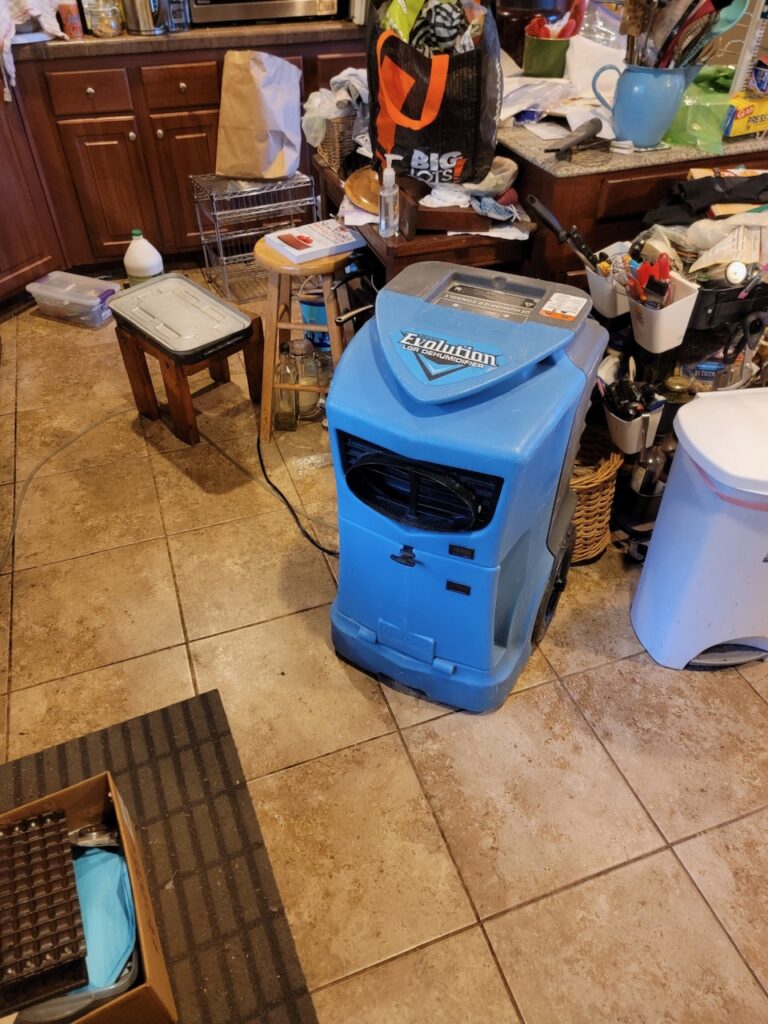
In the pursuit of precision and accuracy, technology emerges as a guiding light. Advanced tools and instruments—reminiscent of the tools wielded by pioneers—enable homeowners and restoration professionals alike to peer beyond the surface, unveiling hidden threats and charting the course towards restoration with unwavering clarity.
Empowerment Through Collaboration
Yet, in the quest for restoration, collaboration emerges as the linchpin of success. Like a symphony performed by a masterful ensemble, the journey towards recovery is enriched through the collaboration between homeowners and restoration specialists. Together, they harmonize their efforts, leveraging collective wisdom and expertise to navigate the complexities of water damage assessment with grace and precision.
The Role of Professionals
While homeowners may possess a keen eye for observation, the expertise of professionals is often indispensable in assessing water damage effectively. Restoration specialists bring a wealth of knowledge, experience, and specialized equipment to the table, enabling them to uncover hidden damage, identify potential hazards, and formulate a comprehensive restoration plan tailored to the unique needs of each situation.
Assessing the extent of water damage is not merely a task—it is an art form, a science, and a critical step towards recovery. By approaching this process with diligence, thoroughness, and the assistance of professionals, homeowners can empower themselves with the knowledge needed to navigate the challenges of water damage restoration effectively. Armed with insights into the scope and severity of the damage, they can chart a course towards restoration, renewal, and ultimately, reclaiming the sanctity of their homes.
Contacting a professional restoration company
Amidst the chaos, however, lies a beacon of hope: professional restoration companies. Next, we’ll explore the importance of contacting a professional restoration company in the wake of water damage and the invaluable assistance they provide in restoring homes to their former glory.
The Immediate Response
When faced with water damage, every moment counts. Professional restoration companies understand the urgency of the situation and offer swift, 24/7 emergency response services. With just a simple phone call, these companies dispatch skilled technicians armed with specialized tools and expertise to assess the damage and kickstart restoration efforts immediately.
Expert Assessment and Mitigation
One of the primary benefits of contacting a professional restoration company is their ability to conduct a comprehensive assessment of the damage. Skilled technicians meticulously inspect the affected areas, identifying hidden moisture, structural weaknesses, and potential hazards. This detailed assessment informs a tailored mitigation plan, aimed at minimizing further damage and restoring the property to its pre-damage condition.
Specialized Equipment and Techniques
Professional restoration companies leverage cutting-edge equipment and techniques to effectively mitigate water damage. Industrial-grade pumps, dehumidifiers, and air movers are deployed to extract standing water, dry out affected areas, and prevent mold growth. Thermal imaging cameras and moisture meters aid in detecting moisture pockets and ensuring thorough drying. With access to these specialized tools, restoration companies can achieve optimal results in a fraction of the time it would take for homeowners to tackle the task themselves.
Comprehensive Restoration Services
Beyond mitigation, professional restoration companies offer a range of comprehensive services to restore homes to their former glory. This includes structural repairs, mold remediation, content restoration, and sanitation. Skilled technicians work diligently to repair and rebuild damaged structures, remove mold and mildew, salvage belongings, and sanitize the environment, ensuring a safe and healthy living space for homeowners.
Navigating Insurance Claims
Dealing with insurance companies can be daunting, especially in the aftermath of a water damage incident. Professional restoration companies can alleviate this burden by assisting homeowners with navigating the insurance claims process. They work directly with insurance adjusters, providing documentation, estimates, and supporting evidence to expedite the claims process and maximize coverage. This streamlines the process for homeowners, allowing them to focus on the restoration process with peace of mind.
Mitigating Further Damage After Water Damage
Assessment and Evaluation
The initial step in mitigating further damage after water damage occurs is conducting a thorough assessment of the affected areas. This involves carefully evaluating the extent of the damage, identifying potential hazards, and prioritizing areas that require immediate attention. By gaining a clear understanding of the situation, homeowners can develop a strategic plan to address the most critical issues promptly.
Swift Water Extraction
One of the most critical aspects of mitigating further damage is the prompt removal of standing water. Excess water can seep into floors, walls, and furniture, causing structural damage, mold growth, and other long-term issues. Utilizing specialized pumps and extraction equipment, homeowners can swiftly remove standing water from their properties, minimizing the risk of further damage and expediting the drying process.
Thorough Drying and Dehumidification
Once standing water has been removed, the focus shifts to thoroughly drying out the affected areas. Lingering moisture can create an environment conducive to mold growth and structural deterioration. By employing industrial-grade dehumidifiers and air movers, homeowners can accelerate the drying process, ensuring that all moisture is effectively eradicated from the environment. Adequate ventilation is also essential to promote airflow and prevent moisture buildup in confined spaces.
Protection of Belongings
In addition to mitigating damage to the structure of the home, homeowners should also take steps to protect their belongings from further harm. Salvageable items should be removed from the affected areas and placed in a dry, safe location to prevent further deterioration. Furniture and other items that cannot be salvaged should be properly disposed of to prevent mold contamination and other health hazards.
Addressing Structural Weaknesses
Water damage can compromise the structural integrity of a home, posing safety risks for occupants. To mitigate further harm, homeowners should promptly address any structural weaknesses or vulnerabilities. This may involve repairing damaged walls, floors, or foundations, reinforcing weakened structures, and sealing gaps or cracks to prevent future water intrusion.
Water Extraction and Drying Process
Explanation of water extraction techniques
Picture this: your home or business inundated by floodwaters, plagued by burst pipes, or haunted by leaky roofs. In these dire moments, water extraction emerges as the hero of the hour, swiftly whisking away standing water and paving the way for the restoration journey ahead. In this guide, we’ll delve into the art and science of water extraction, exploring the techniques and tools employed to combat water-induced chaos and reclaim control over the affected environment.
The Art of Water Extraction
Water extraction is akin to a delicate ballet—a synchronized performance of precision and expertise. At its essence, the objective is clear: to expeditiously and efficiently remove standing water from the affected area. Yet, achieving this objective demands finesse and a profound comprehension of the underlying dynamics.
Techniques and Tools
There are several techniques and tools employed in water extraction, each tailored to the specific needs of the situation at hand. Let’s explore some of the most common ones:
- Portable Extractors: These versatile machines are the workhorses of water extraction, capable of swiftly removing standing water from floors, carpets, and upholstery. Equipped with powerful suction capabilities, portable extractors can tackle both small-scale and large-scale water damage with ease.
- Truck-Mounted Extractors: For more extensive water damage scenarios, truck-mounted extractors are the tool of choice. These robust machines are mounted on trucks and boast unparalleled suction power, making them ideal for tackling large volumes of standing water in commercial properties or vast residential spaces.
- Submersible Pumps: In situations where water levels are particularly high or access is limited, submersible pumps are indispensable. These durable pumps are designed to operate underwater, making them ideal for extracting standing water from basements, crawl spaces, and other hard-to-reach areas.
- Wet/Dry Vacuums: For smaller-scale water damage incidents or localized areas of standing water, wet/dry vacuums are a practical solution. These versatile devices can quickly and effectively remove water from floors, carpets, and other surfaces, making them an essential tool in any water damage restoration arsenal.
The Precision of Technique
Beyond the tools themselves, the finesse of technique is paramount in water extraction. Seasoned professionals deftly maneuver extractors and pumps, ensuring comprehensive coverage and optimal removal of standing water. Attention to detail is paramount, as even the slightest oversight can pave the way for mold growth and further damage.
Importance of thorough drying methods
One often overlooked yet pivotal step is thorough drying. Picture this: your sanctuary besieged by floodwaters or your workplace plagued by burst pipes. In these moments of turmoil, thorough drying methods emerge as the unsung heroes, banishing moisture and heralding the path to comprehensive restoration. In this illuminating discourse, we delve into the significance of thorough drying methods in water damage restoration, uncovering their transformative impact on the journey to recovery.
Understanding the Essence of Thorough Drying
Thorough drying transcends mere surface dryness; it entails the meticulous removal of moisture from every crevice and corner. It is the cornerstone of preventing mold growth, structural decay, and lingering damage, laying the foundation for effective restoration endeavors.
The Consequences of Inadequate Drying
The repercussions of inadequate drying are far-reaching and profound. Lingering moisture provides a fertile breeding ground for mold and mildew, triggering a cascade of health hazards and structural compromises. Moreover, unchecked moisture can permeate building materials, leading to warping, swelling, and decay over time. Inadequate drying not only prolongs the restoration process but also exacerbates damage and escalates costs—a scenario no homeowner or business owner wishes to encounter.
The Transformative Power of Thorough Drying
Thorough drying methods wield transformative power, mitigating mold risks, preserving structural integrity, and expediting recovery timelines. From advanced dehumidifiers to precision air movers, each tool and technique serves as a beacon of hope in restoring equilibrium to water-damaged spaces.
Implementing Thorough Drying Methods
Implementing thorough drying methods requires a strategic approach and a commitment to excellence. Skilled technicians meticulously assess the extent of moisture intrusion, strategically deploy drying equipment, and monitor moisture levels with precision. It’s a symphony of science and art, orchestrated to restore balance and vitality to spaces marred by water damage.
Embracing the Imperative of Thorough Drying
As stewards of our environments, we must recognize its transformative potential in fostering renewal and resilience. By embracing thorough drying practices, we fortify our defenses against the ravages of water damage, paving the way for revitalized spaces and renewed hope in the face of adversity. Let us heed the call to embrace thorough drying and embark on the journey to restoration with determination and purpose.
Mold Remediation and Prevention
Identifying and addressing mold growth
Mold growth is a common concern for homeowners and property managers, posing potential health hazards and structural issues if left untreated. In this comprehensive guide, we’ll delve into the process of identifying and tackling mold growth, offering valuable insights for effective remediation.
Spotting Mold Growth
Mold thrives in damp, humid conditions, making areas like bathrooms, basements, and kitchens prime targets for infestation. Here are some telltale signs of mold growth:
- Visible Mold Patches: Mold often manifests as discolored patches on walls, ceilings, or surfaces, appearing in various hues such as black, green, or white.
- Musty Odors: A persistent musty or earthy smell could indicate hidden mold growth lurking behind walls, under flooring, or in other concealed areas.
- Water Damage Traces: Areas previously affected by water damage, such as leaks or floods, are prone to mold growth. Regularly inspect these areas for any signs of mold colonization.
Addressing Mold Growth
Effective remediation of mold growth requires a systematic approach to eliminate existing mold and prevent its recurrence. Here are key steps in the remediation process:
- Assessment: Conduct a thorough inspection of the property to identify areas affected by mold growth. This may involve visual inspection, moisture testing, and sampling for laboratory analysis if necessary.
- Containment: Isolate the affected area to prevent the spread of mold spores to other parts of the property. Use barriers such as plastic sheeting and negative air pressure machines to contain airborne mold particles.
- Remediation: Remove mold-infested materials such as drywall, insulation, or carpeting from the affected area. Clean surfaces with appropriate antimicrobial solutions to kill mold spores and inhibit future growth.
- Moisture Control: Address underlying moisture issues to prevent mold recurrence. Repair leaks, improve ventilation, and reduce humidity levels to create an inhospitable environment for mold growth.
- Monitoring: Regularly monitor the treated area for signs of mold regrowth. Conduct follow-up inspections and maintain proper moisture levels to prevent mold resurgence.
Preventing Mold Growth
Prevention is the key to averting mold-related issues in the future. Take proactive measures to minimize moisture and humidity levels in your living or working space:
- Ensure adequate ventilation in areas prone to moisture buildup.
- Promptly rectify leaks or water damage.
- Employ dehumidifiers in regions with high humidity or damp conditions.
- Regularly maintain and clean HVAC systems to stave off mold growth in ducts and vents.
It’s Essential to Identify Mold Growth
Identifying and addressing mold growth is essential for upholding a healthy and secure indoor environment. By recognizing the indicators of mold infestation and implementing effective remediation tactics, homeowners and property managers can mitigate health risks and safeguard their premises against the detrimental effects of mold.
Implementing preventative measures
Armed with knowledge and proactive measures, one can effectively thwart its advances. We’ll explore the implementation of preventative measures to keep mold growth at bay and ensure a healthy living environment for you and your loved ones.
Understanding the Enemy: Mold 101
Before diving into preventative tactics, it’s crucial to grasp the nature of our foe. Mold is a type of fungus that thrives in damp, humid conditions, flourishing in areas with inadequate ventilation and water intrusion. Common indoor molds include Aspergillus, Penicillium, and the notorious Stachybotrys chartarum, or “black mold.” Mold spores are pervasive in the environment and can infiltrate homes through various avenues, including open doors, windows, HVAC systems, and even on clothing or pets.
The Importance of Prevention
Prevention stands as the best defense against mold growth. While remediation efforts can address existing mold issues, prevention strategies aim to nip the problem in the bud before it escalates into a full-blown infestation. By implementing preventative measures, homeowners can shield their properties from mold’s damaging effects and preserve their family’s health and well-being.
Proactive Measures for Mold Prevention
- Control Moisture: Moisture control is paramount in mold prevention. Keep indoor humidity levels between 30-60% by using dehumidifiers in damp areas and ensuring proper ventilation throughout the home. Promptly repair leaks in plumbing, roofs, and windows to prevent water intrusion.
- Improve Ventilation: Adequate ventilation is essential for reducing moisture buildup and preventing mold growth. Install exhaust fans in bathrooms, kitchens, and laundry rooms to expel humid air outdoors. Open windows and doors whenever weather permits to encourage airflow.
- Monitor Indoor Humidity: Invest in a hygrometer to monitor indoor humidity levels regularly. Place it in areas prone to moisture accumulation, such as basements and crawl spaces, and adjust humidity levels as needed to maintain optimal conditions.
- Utilize Mold-Resistant Materials: When renovating or building, opt for mold-resistant building materials such as mold-resistant drywall, paints, and insulation. These materials are designed to inhibit mold growth and are particularly beneficial in moisture-prone areas like bathrooms and basements.
- Regular Maintenance: Conduct routine inspections of your home, paying special attention to areas susceptible to mold growth. Check for signs of water damage, leaks, or condensation, and address any issues promptly. Clean and maintain HVAC systems regularly to prevent mold buildup in ducts and vents.
The battle against mold commences with proactive prevention. By implementing practical measures such as moisture control, enhanced ventilation, indoor humidity monitoring, utilization of mold-resistant materials, and routine maintenance, homeowners can create an environment hostile to mold growth. With vigilance and foresight, you can safeguard your home and loved ones against the hazards of mold, ensuring a healthy and mold-free sanctuary for years to come.
Structural Repairs and Reconstruction
Repairing damaged structures and materials
Structural damage to buildings can occur due to various factors such as water intrusion, natural disasters, or wear and tear over time. Repairing damaged structures and materials is crucial to maintaining the integrity and safety of a property. In this comprehensive guide, we’ll explore the essential steps and considerations involved in repairing damaged structures, providing valuable insights for property owners and restoration professionals alike.
1. Assessment of Damage:
The first step in repairing damaged structures is to conduct a thorough assessment to determine the extent of the damage. This may involve inspecting the affected areas, identifying compromised structural elements, and assessing any underlying issues that contributed to the damage.
2. Structural Repairs:
Once the assessment is complete, structural repairs can begin. This may involve repairing or replacing damaged beams, columns, walls, or foundations. Structural repairs should be carried out by qualified professionals to ensure the safety and stability of the building.
3. Material Replacement:
In addition to structural repairs, damaged materials such as drywall, flooring, insulation, and roofing may need to be replaced. It’s essential to use high-quality materials that are compatible with the existing structure to ensure proper functionality and longevity.
4. Waterproofing and Weatherproofing:
To prevent future damage, it’s crucial to waterproof and weatherproof the repaired structures. This may involve applying sealants, coatings, or membranes to protect against water intrusion, moisture buildup, and environmental factors such as rain, wind, and sunlight.
5. Mold Remediation:
If water damage has occurred, mold remediation may be necessary to address any mold growth that has developed as a result. Mold remediation involves removing mold-infested materials, cleaning and disinfecting affected areas, and implementing measures to prevent mold recurrence.
6. Finishing Touches:
Once the repairs are complete, finishing touches such as painting, sealing, and trim work can be done to restore the aesthetic appeal of the property. Attention to detail is essential to ensure a seamless finish and a restored appearance.
7. Regular Maintenance:
To prevent future structural damage, regular maintenance is key. Property owners should inspect their buildings regularly, address any issues promptly, and implement preventative measures such as proper drainage, gutter cleaning, and tree trimming to mitigate potential risks.
Repairing damaged structures requires a systematic approach and attention to detail. By conducting a thorough assessment, carrying out necessary repairs, replacing damaged materials, waterproofing and weatherproofing, addressing mold growth, and implementing regular maintenance, property owners can ensure the longevity and safety of their buildings. For complex or extensive damage, it’s advisable to enlist the help of experienced professionals to ensure proper restoration and peace of mind.
Reconstructing affected areas if necessary
Next, we’ll delve into the essential steps and considerations involved in the reconstruction process after water damage, providing valuable insights for property owners and restoration professionals alike.
1. Assessment of Damage:
Before beginning the reconstruction process, a thorough assessment of the damage is essential. This involves inspecting the affected areas, identifying structural compromises, and assessing the extent of the damage to determine the scope of reconstruction required.
2. Planning and Design:
Once the assessment is complete, careful planning and design are crucial for a successful reconstruction project. Property owners should work with experienced professionals to develop a comprehensive plan that addresses structural repairs, material replacements, and any necessary upgrades or modifications.
3. Structural Repairs:
Structural repairs are often the first step in the reconstruction process. This may involve repairing or replacing damaged beams, columns, walls, or foundations to ensure the structural integrity of the building.
4. Material Replacement:
Damaged materials such as drywall, flooring, insulation, and roofing may need to be replaced during the reconstruction process. It’s essential to use high-quality materials that are compatible with the existing structure to ensure durability and longevity.
5. Reconstruction Work:
With a solid plan in place, reconstruction work can begin. This may include framing, drywall installation, flooring installation, painting, and finishing work to restore the affected areas to their pre-damage condition.
6. Plumbing and Electrical Systems:
If water damage has affected plumbing or electrical systems, it’s crucial to address these issues during the reconstruction process. This may involve repairing or replacing damaged pipes, wiring, fixtures, and appliances to ensure safety and functionality.
7. Waterproofing and Weatherproofing:
To prevent future water damage, waterproofing and weatherproofing measures should be implemented during the reconstruction process. This may include applying sealants, coatings, or membranes to protect against water intrusion and environmental factors.
8. Final Inspection and Testing:
Once the reconstruction work is complete, a final inspection and testing should be conducted to ensure that the affected areas have been properly restored and meet safety and quality standards.
By conducting a thorough assessment, developing a comprehensive plan, addressing structural repairs and material replacements, and implementing waterproofing and weatherproofing measures, property owners can successfully restore their properties to their pre-damage condition. For complex or extensive reconstruction projects, it’s advisable to enlist the help of experienced professionals to ensure a successful outcome.
Cleaning and Sanitization
Cleaning and disinfecting surfaces
Water damage not only poses risks to a property’s structural integrity but also presents health hazards due to potential microbial contamination. Cleaning and disinfecting surfaces after water damage are crucial steps to ensure a safe and healthy environment for occupants. In this comprehensive guide, we’ll explore the importance of thorough cleaning and disinfection procedures after water damage, providing actionable insights for property owners and restoration professionals alike.
1. Assessment of Contamination:
Before initiating the cleaning and disinfection process, it’s essential to assess the level of contamination. Depending on the source of water intrusion (clean water, grey water, or black water), different cleaning and disinfection protocols may be required. Clean water from sources such as broken pipes or rainwater may pose minimal contamination risk, while grey water from appliances or black water from sewage backups can contain harmful pathogens and require more extensive cleaning measures.
2. Removal of Standing Water and Debris:
The first step in cleaning and disinfecting surfaces after water damage is to remove any standing water and debris from the affected areas. This may involve using pumps, wet/dry vacuums, and other extraction equipment to extract water and remove debris. Prompt removal of standing water is crucial to prevent microbial growth and further damage.
3. Cleaning Surfaces:
Once the standing water and debris have been removed, surfaces should be thoroughly cleaned to remove dirt, grime, and microbial contaminants. Use a combination of detergent solutions and mechanical scrubbing to clean surfaces effectively. Pay special attention to areas that may harbor moisture and microbial growth, such as carpets, upholstery, and porous materials.
4. Disinfection of Surfaces:
After cleaning, it’s essential to disinfect surfaces to kill any remaining pathogens and prevent microbial growth. Choose an appropriate disinfectant that is effective against a broad spectrum of bacteria, viruses, and fungi. Follow manufacturer instructions for proper dilution and application methods, and ensure adequate contact time for the disinfectant to be effective.
5. Drying and Dehumidification:
Once surfaces have been cleaned and disinfected, it’s crucial to thoroughly dry the affected areas to prevent moisture-related issues such as mold growth. Use air movers, dehumidifiers, and ventilation equipment to promote airflow and accelerate the drying process. Monitor moisture levels regularly and continue drying until moisture levels are within acceptable ranges.
6. Final Inspection and Testing:
After cleaning, disinfection, and drying are complete, conduct a final inspection and testing to ensure that surfaces have been properly cleaned and sanitized. Use microbial testing methods such as ATP testing or surface swabbing to verify cleanliness and confirm that microbial contamination has been adequately addressed.
By assessing contamination levels, removing standing water and debris, thoroughly cleaning and disinfecting surfaces, and ensuring proper drying and ventilation, property owners can mitigate health risks and restore their properties to a safe and habitable condition. For complex or extensive cleaning and disinfection needs, it’s advisable to enlist the help of experienced professionals to ensure thorough and effective remediation.
Restoring cleanliness and safety to the environment
Water damage restoration marks the culmination of a challenging journey to reclaim a safe and habitable environment after the havoc wreaked by water intrusion. However, the journey doesn’t end with restoration; it extends into ensuring ongoing cleanliness and safety to safeguard occupants’ well-being. In this guide, we’ll delve into the crucial steps and strategies for maintaining cleanliness and safety post-water damage restoration, offering insights to property owners and restoration professionals alike.
Thorough Inspection and Quality Assurance:
Following the completion of water damage restoration, conduct a comprehensive inspection to ensure that all areas have been properly restored and sanitized. This involves checking for any signs of residual moisture, mold growth, or structural issues. Implement rigorous quality assurance measures to confirm that the environment meets safety and cleanliness standards.
Continuous Monitoring and Maintenance:
Establish a proactive monitoring and maintenance routine to keep a vigilant eye on the restored environment. Regular inspections should be conducted to detect any signs of water intrusion, moisture buildup, or microbial growth. Address any emerging issues promptly to prevent them from escalating and compromising cleanliness and safety.
Implementing Preventive Measures:
To mitigate the risk of future water damage and maintain cleanliness and safety, implement preventive measures. This may include reinforcing building envelopes, sealing vulnerable entry points, and maintaining drainage systems. Educate occupants about water conservation practices and early warning signs of water damage to promote proactive measures.
Education and Training Programs:
Provide education and training programs to occupants and maintenance staff on best practices for maintaining cleanliness and safety. This may include proper cleaning techniques, mold prevention strategies, and emergency response protocols. Empowering individuals with knowledge and skills enhances their ability to contribute to a clean and safe environment.
Collaborating with Professionals:
Establish partnerships with reputable restoration and maintenance professionals to ensure ongoing support and expertise. Collaborate with certified technicians for periodic inspections, maintenance tasks, and emergency response services. Leverage their specialized knowledge and equipment to address any challenges that may arise.
Continuous Improvement Initiatives:
Embrace a culture of continuous improvement by soliciting feedback from occupants and stakeholders about their experiences and concerns. Use this feedback to refine and enhance cleanliness and safety protocols. Stay informed about emerging trends, technologies, and best practices in water damage restoration and maintenance to adapt and evolve accordingly.
This commitment to ongoing cleanliness and safety not only protects occupants’ well-being but also safeguards the integrity of the property in the long term.
Final Inspections and Documentation
Conducting final inspections
After the arduous process of water damage restoration, the journey is not quite over. Conducting final inspections plays a pivotal role in ensuring that the restoration process has been completed effectively and the environment is safe and habitable for occupants. In this guide, we’ll explore the significance of final inspections after water damage restoration, highlighting key considerations and best practices.
Assessing Restoration Completion:
Final inspections serve as the ultimate checkpoint to verify that all restoration tasks have been completed to the highest standards. This involves assessing the restoration workmanship, ensuring that all damaged areas have been properly repaired, cleaned, and sanitized. Pay close attention to details, such as structural integrity, moisture levels, and cleanliness of surfaces.
Verifying Compliance with Safety Standards:
During final inspections, it’s crucial to verify compliance with safety standards and regulations. This includes ensuring that all electrical systems are safe and operational, plumbing fixtures are functioning correctly, and fire safety measures are in place. Confirm that the environment meets health and safety requirements to safeguard occupants’ well-being.
Identifying Any Remaining Issues:
Even after restoration efforts, there may be residual issues that require attention. Final inspections provide an opportunity to identify any remaining issues, such as hidden moisture pockets, microbial growth, or structural weaknesses. Thoroughly assess all areas of the property to detect and address any lingering concerns promptly.
Documenting Restoration Completion:
Documentation is an essential aspect of final inspections, providing a record of restoration completion and compliance with regulatory requirements. Document all inspection findings, including photographs, reports, and certificates of compliance. This documentation serves as valuable evidence of the restoration process and may be required for insurance claims or legal purposes.
Educating Property Owners:
Final inspections offer an opportunity to educate property owners about the restoration process and maintenance practices. Provide guidance on how to maintain the cleanliness and safety of the environment, including tips for preventing future water damage. Empowering property owners with knowledge enhances their ability to protect their property and occupants.
Ensuring Customer Satisfaction:
Above all, final inspections are about ensuring customer satisfaction and peace of mind. Communicate openly with property owners throughout the inspection process, addressing any questions or concerns they may have. Demonstrate a commitment to delivering high-quality results and exceeding expectations to leave a lasting positive impression.
By conducting thorough inspections, verifying compliance with safety standards, identifying any remaining issues, documenting restoration completion, educating property owners, and ensuring customer satisfaction, restoration professionals can complete the journey with confidence and integrity.
Documenting The Restoration Process For Insurance Purposes
Documenting the restoration process meticulously is not just a procedural task—it’s a vital step in ensuring a smooth insurance claims process and safeguarding the interests of property owners. From the initial assessment to the final inspection, each phase of the restoration journey should be carefully documented to provide a comprehensive record of the damage incurred and the steps taken to mitigate it. In this authoritative article, we’ll delve into the importance of documenting the restoration process for insurance purposes, offering insights and guidance.
The Baseline:
The documentation process begins with establishing a baseline assessment of the damage. This involves conducting a thorough inspection of the property, documenting the extent of the water damage, and capturing detailed photographs or videos of the affected areas. By establishing a baseline assessment, restoration professionals and insurance adjusters have a clear starting point for assessing the scope of the damage and formulating a restoration plan.
A Detailed Restoration Plan:
Once the baseline assessment is complete, a detailed restoration plan should be developed and documented. This plan should outline the specific steps and procedures that will be undertaken to mitigate the water damage, including water extraction, drying, cleaning, and repairs. Documenting the restoration plan ensures transparency and clarity about the intended course of action, which can be invaluable during the insurance claims process.
Progress Reports:
Throughout the restoration process, daily progress reports should be generated and documented. These reports should provide a detailed overview of the work performed each day, including the tasks completed, materials used, and any challenges encountered. Daily progress reports serve as a chronological record of the restoration efforts and provide insight into the timeline and progression of the restoration process.
Photographs and Visual Docs:
Visual documentation, such as photographs and videos, play a crucial role in documenting the restoration process. Photographs should be taken before, during, and after each phase of restoration to capture the progression of the work and the improvements made. Visual documentation provides tangible evidence of the damage incurred and the effectiveness of the restoration efforts, which can be instrumental in substantiating insurance claims.
Invoices and Receipts:
All expenses related to the restoration process should be meticulously documented, including detailed invoices and receipts for materials, labor, equipment rentals, and subcontractor services. These financial records provide a clear breakdown of the costs incurred during the restoration process and serve as supporting documentation for insurance claims. Transparency and accuracy in financial documentation are paramount to ensure that property owners are adequately compensated for their losses.
Final Inspection and Documentation:
Upon completion of the restoration process, a final inspection should be conducted to verify that all work has been completed to the satisfaction of the property owner and insurance requirements. A detailed inspection report should be generated, documenting the findings of the inspection and any remaining issues that require attention. Once the property owner approves the final inspection, completion documentation should be provided, including a certificate of completion and a summary of the restoration efforts undertaken.
Documenting is a critical step in ensuring a successful insurance claims process and protecting the interests of property owners. By establishing a baseline assessment, developing a detailed restoration plan, generating daily progress reports, capturing visual documentation, maintaining detailed financial records, and providing thorough completion documentation, restoration professionals can create a comprehensive record of the restoration journey that facilitates a seamless insurance claims process and provides peace of mind to property owners.
Final Summery
Key Recovery Steps
Step 1. Know The Process
Water damage restoration is the process of restoring a property to its pre-damaged state after it has been affected by water intrusion. Proper recovery is essential to prevent further damage, maintain structural integrity, and ensure the health and safety of occupants.
Step 2. Assessment
Immediately after water damage occurs, it is crucial to assess the extent of the damage. This involves inspecting affected areas to determine the severity of the water intrusion and identifying potential hazards.
Step 3. Contact A Professional Restoration Company
Contacting a professional restoration company is vital to ensure that the damage is properly assessed and addressed. Experienced professionals have the expertise and equipment necessary to mitigate further damage and begin the restoration process promptly.
Step 4. Mitigate Further Water Damage
Mitigating further damage is another immediate step in water damage recovery. This may involve measures such as removing standing water, drying out affected areas, and securing the property to prevent additional water infiltration.
Step 5. Extract Water and Dry Salvageable Material
The water extraction and drying process are critical components of water damage restoration. Various techniques, such as extraction pumps and dehumidifiers, are used to remove excess water and moisture from the affected areas. Thorough drying methods are essential to prevent mold growth and structural damage.
Step 6. Is Mold Remediation Needed?
Mold remediation and prevention are essential steps in water damage recovery. Mold can begin to grow within 24-48 hours of water damage, so it’s crucial to identify and address any mold growth promptly. Implementing preventative measures, such as improving ventilation and addressing moisture issues, can help prevent future mold growth.
Step 7. Do You Need Structural Repair or Reconstruction?
Structural repairs and reconstruction may be necessary to restore the property to its pre-damaged condition. This may involve repairing damaged structures and materials, as well as reconstructing affected areas if necessary.
Step 7. Cleaning and Sanitization
Cleaning and sanitization are essential for restoring cleanliness and safety to the environment after water damage. Surfaces must be thoroughly cleaned and disinfected to remove any contaminants and prevent health risks.
Step 8. The Final Inspection
Conducting final inspections is necessary to ensure that the restoration process has been completed effectively. Documentation of the restoration process is essential for insurance purposes, including documenting the extent of the damage, the steps taken for recovery, and any associated costs.
Importance of seeking professional assistance for water damage restoration
Seasoned professionals can make all the difference between chaos and clarity. Water damage restoration isn’t merely about drying out soggy carpets or mopping up puddles—it’s a multifaceted process requiring expertise, precision, and a meticulous approach. In this informative article, we’ll explore the paramount importance of seeking professional assistance for water damage restoration, elucidating key reasons.
1. Expertise in Assessment and Diagnosis:
Professional water damage restoration companies bring a wealth of expertise to the table, particularly in the critical phase of assessment and diagnosis. Trained technicians possess the knowledge and skills to conduct thorough inspections, identifying the extent of the damage, assessing potential hazards, and pinpointing underlying causes. Their keen eye for detail ensures that no stone is left unturned in unraveling the complexities of water damage.
2. Comprehensive Restoration Solutions:
One size does not fit all when it comes to water damage restoration. Professional restoration companies offer tailored solutions designed to address the unique needs and challenges of each scenario. From water extraction and drying to mold remediation and structural repairs, they implement a comprehensive approach to restoration, leaving no aspect overlooked or neglected.
3. State-of-the-Art Equipment and Techniques:
The arsenal of equipment and techniques wielded by professional restoration technicians is nothing short of cutting-edge. Industrial-grade pumps, moisture meters, thermal imaging cameras, and advanced drying equipment are just a few examples of the tools at their disposal. Coupled with proven methodologies and techniques, these resources enable them to tackle water damage with unparalleled efficiency and efficacy.
4. Timely Mitigation of Damage:
Time is of the essence in water damage restoration, and professional assistance ensures swift and decisive action. With round-the-clock availability and rapid response times, restoration companies prioritize mitigating damage and preventing further deterioration. Their prompt intervention can spell the difference between minor inconvenience and catastrophic loss for property owners.
5. Compliance with Safety Standards:
Safety is non-negotiable in the realm of water damage restoration, and professionals adhere to stringent safety standards and regulations. From ensuring electrical safety to implementing proper mold remediation protocols, they take every precaution to safeguard the well-being of occupants and workers alike. Compliance with safety standards provides peace of mind and mitigates liability risks for property owners.
6. Streamlined Insurance Claims Process:
Navigating the labyrinthine landscape of insurance claims can be daunting, but professional assistance can ease the burden. Restoration companies are well-versed in insurance protocols and documentation requirements, streamlining the claims process for property owners. Their comprehensive documentation and expertise in dealing with insurance adjusters expedite the resolution of claims, ensuring fair compensation for losses incurred.
In essence, the importance of seeking professional assistance for water damage restoration cannot be overstated. With their expertise in assessment and diagnosis, comprehensive restoration solutions, state-of-the-art equipment and techniques, timely mitigation of damage, compliance with safety standards, and streamlined insurance claims process, professional restoration companies are indispensable allies in the battle against water damage. By entrusting the restoration process to seasoned professionals, property owners can navigate the turbulent waters of water damage with confidence and clarity, emerging stronger on the other side.

